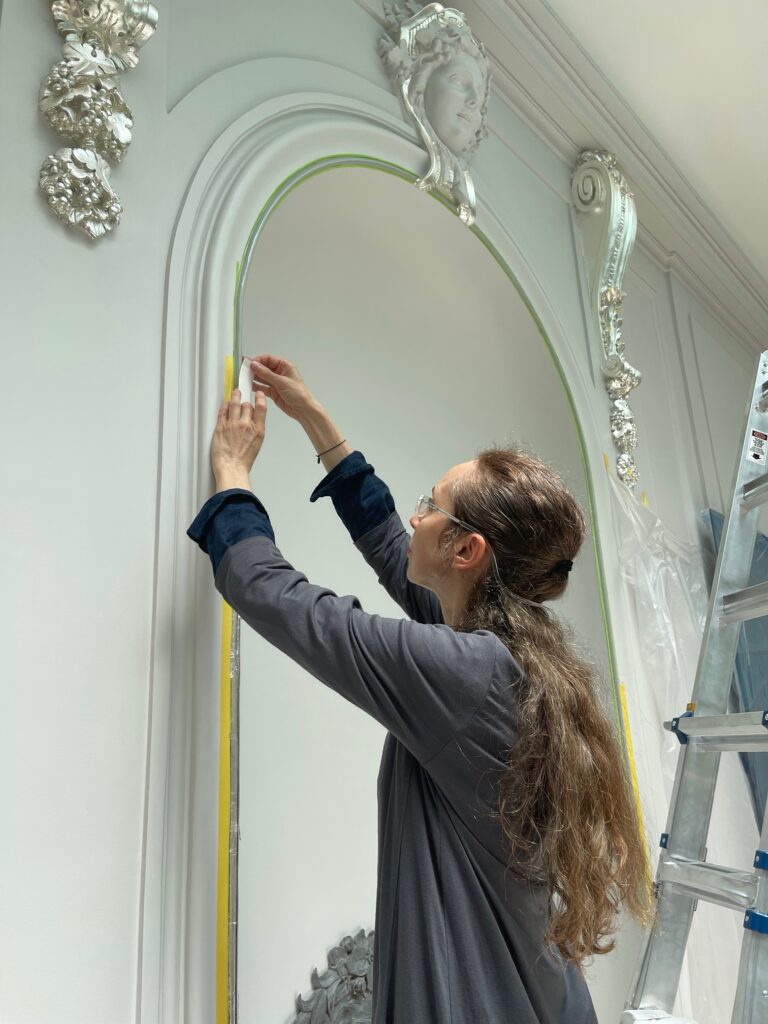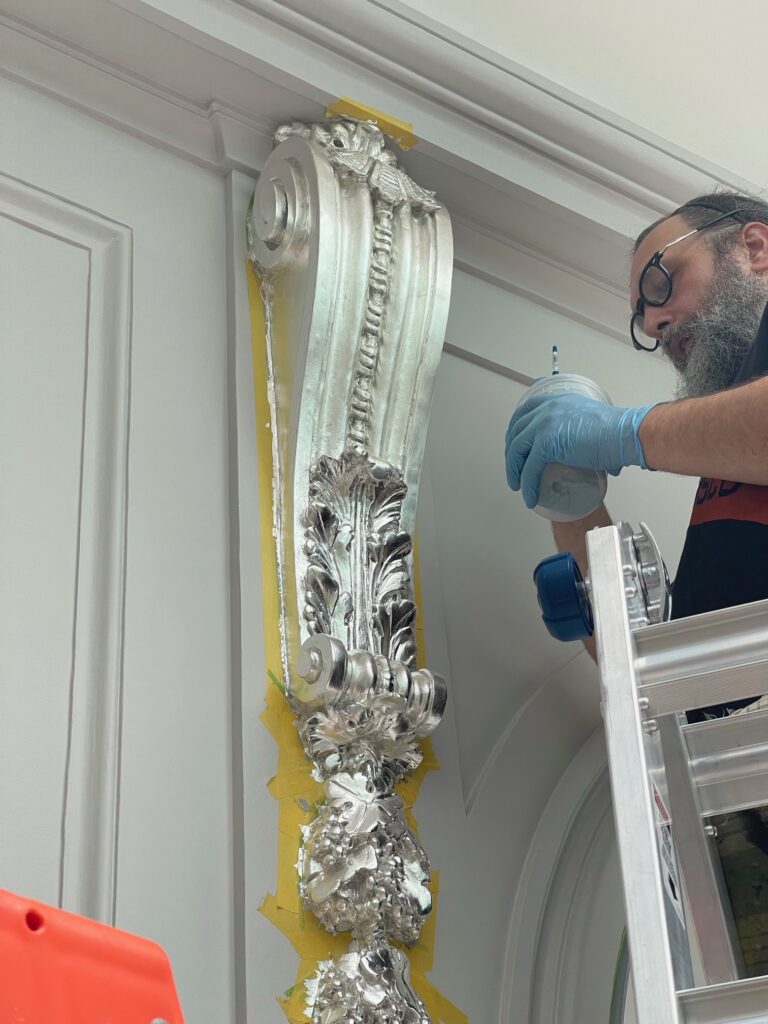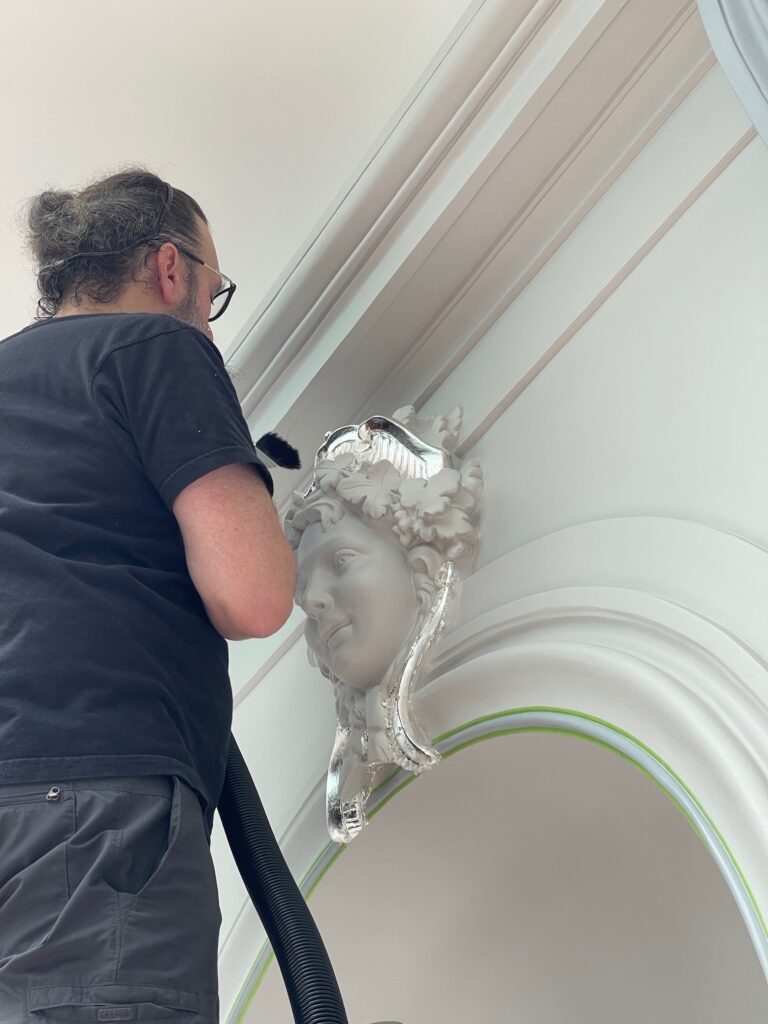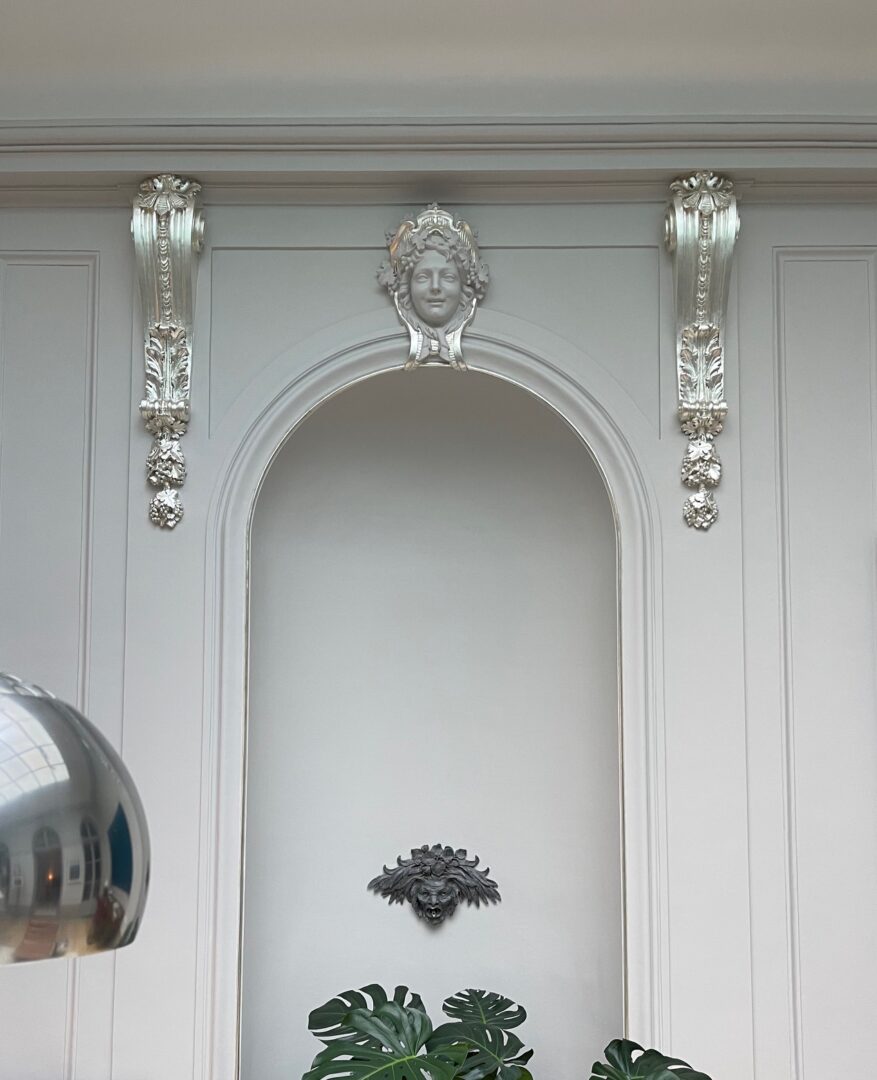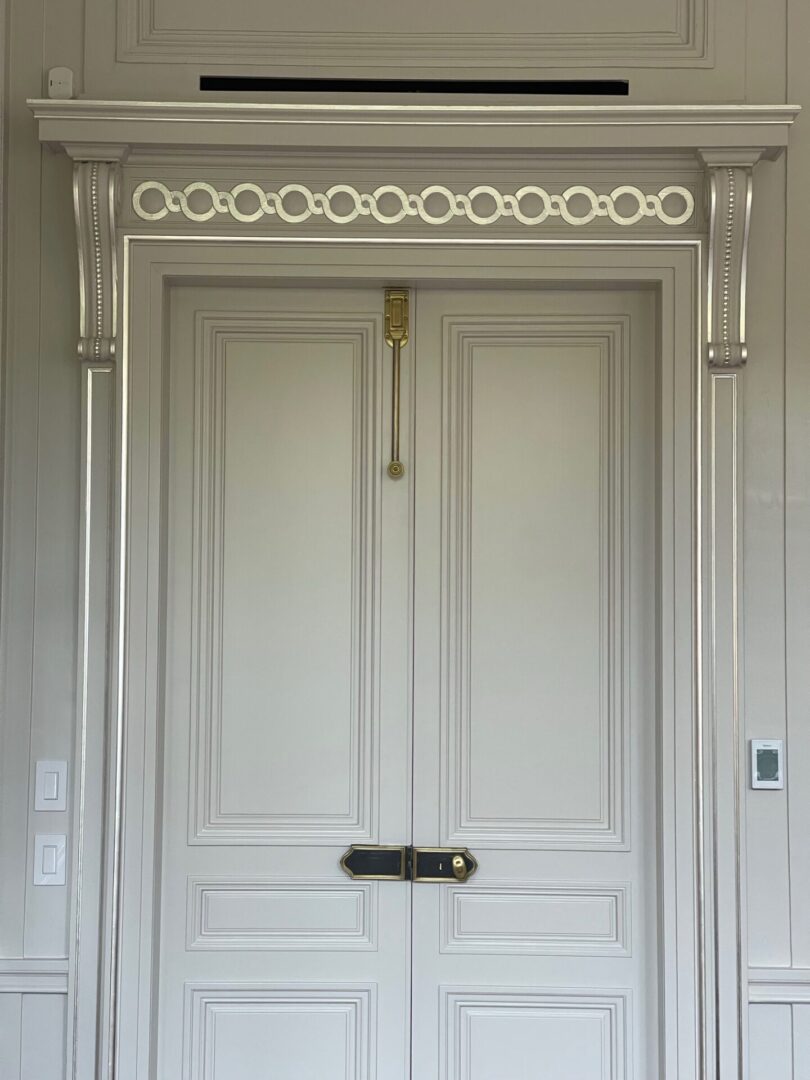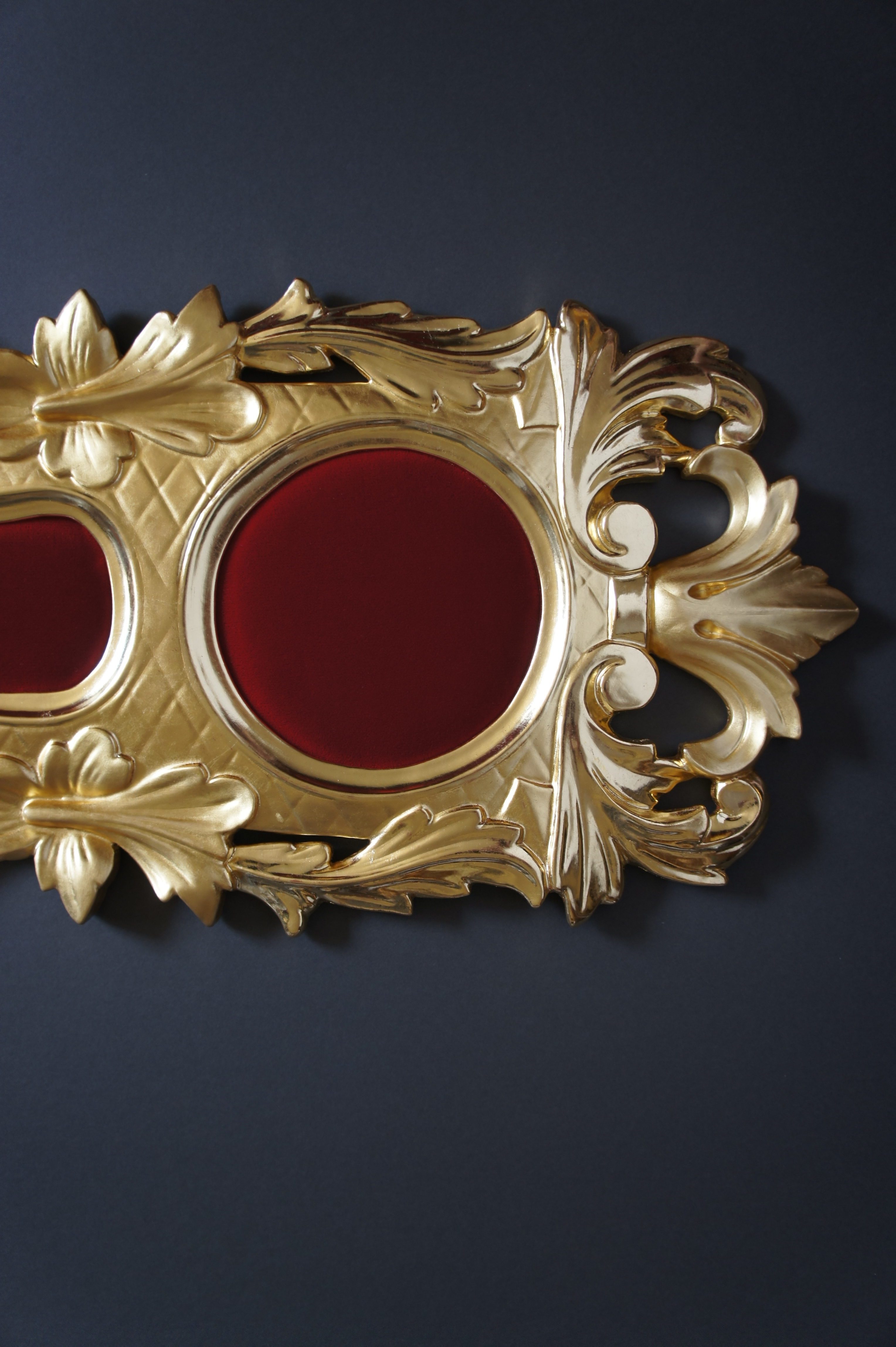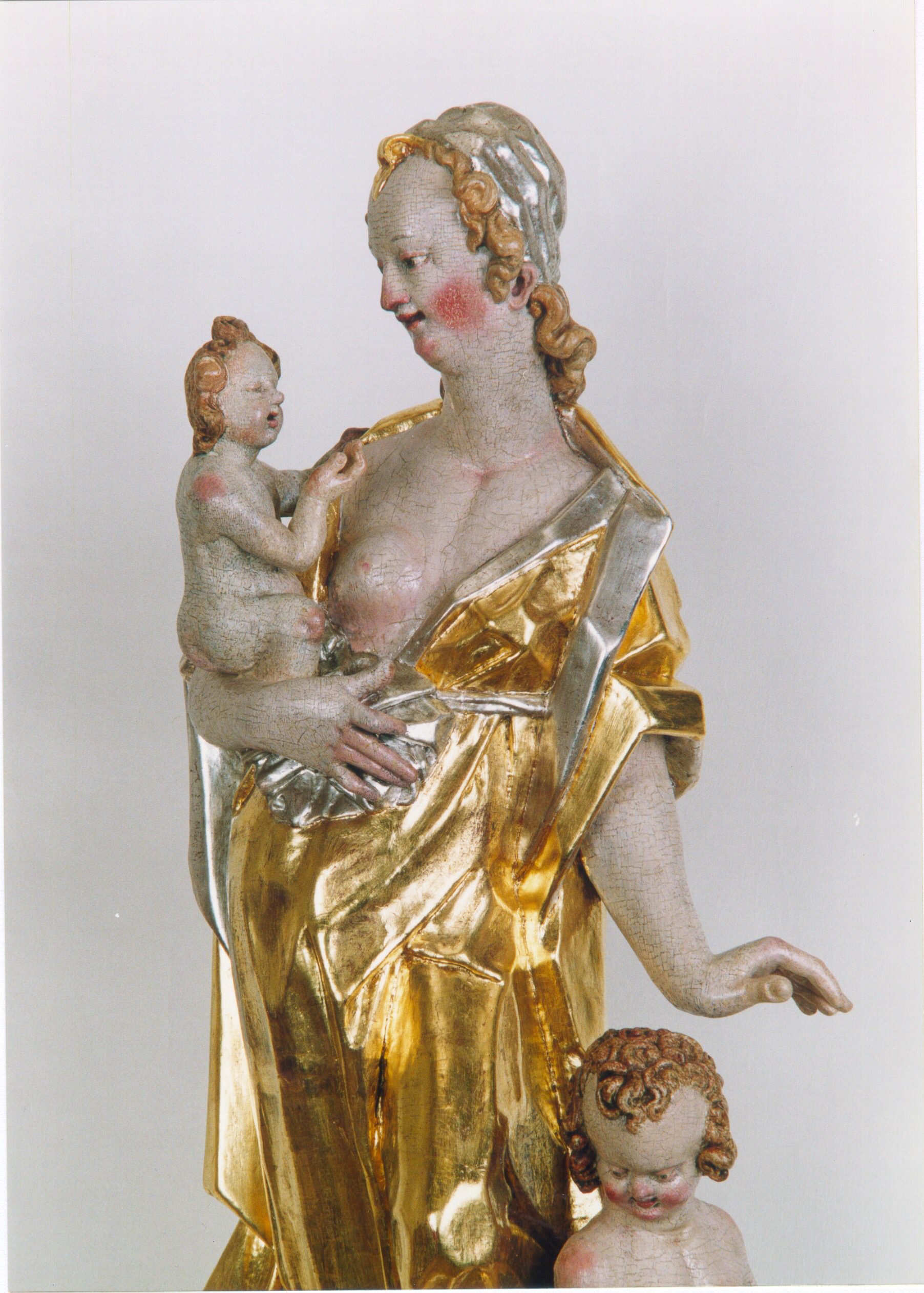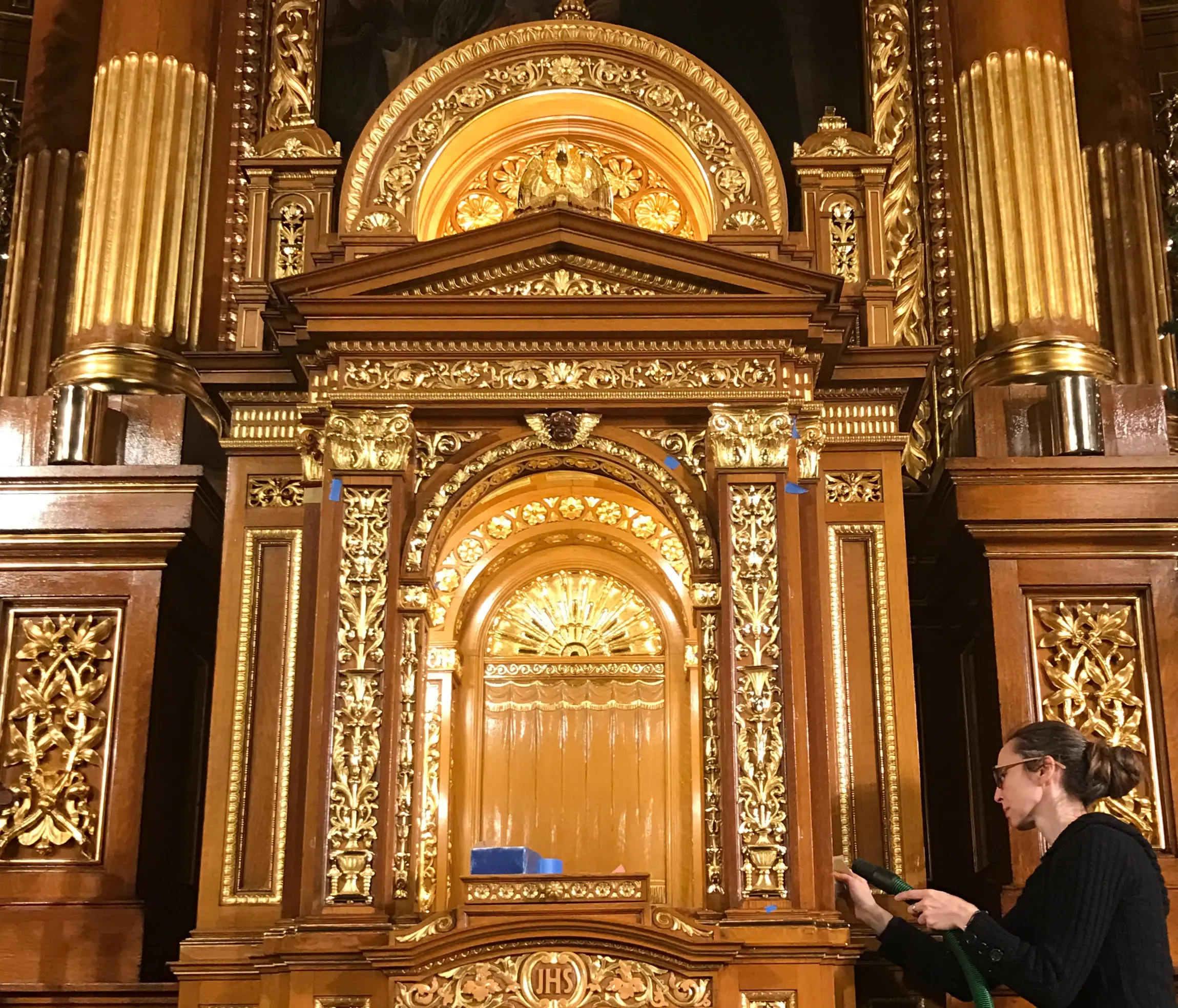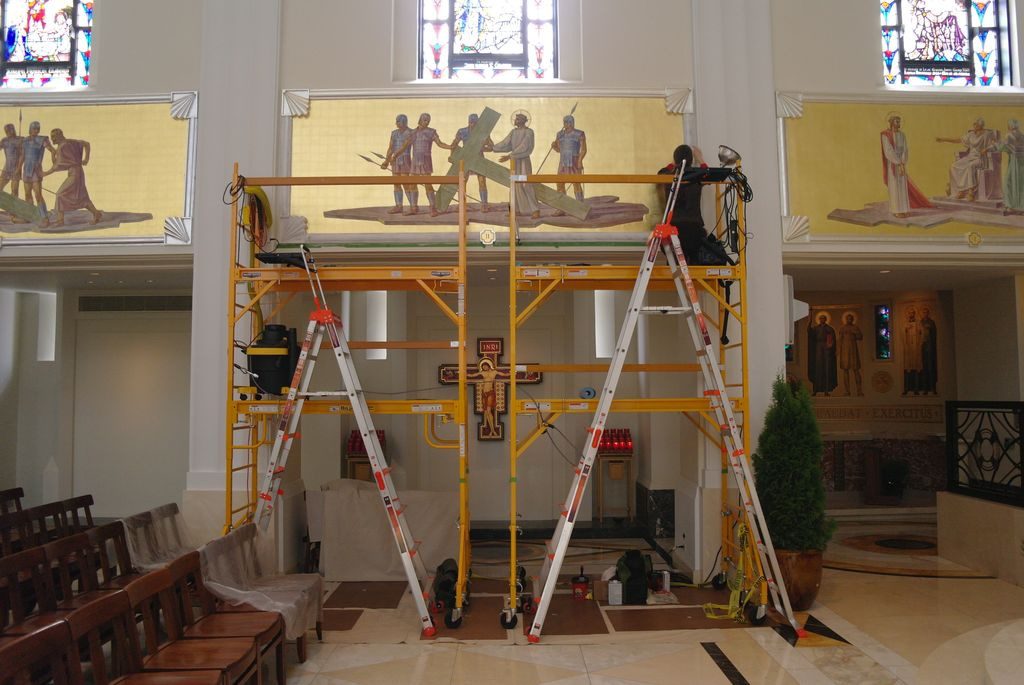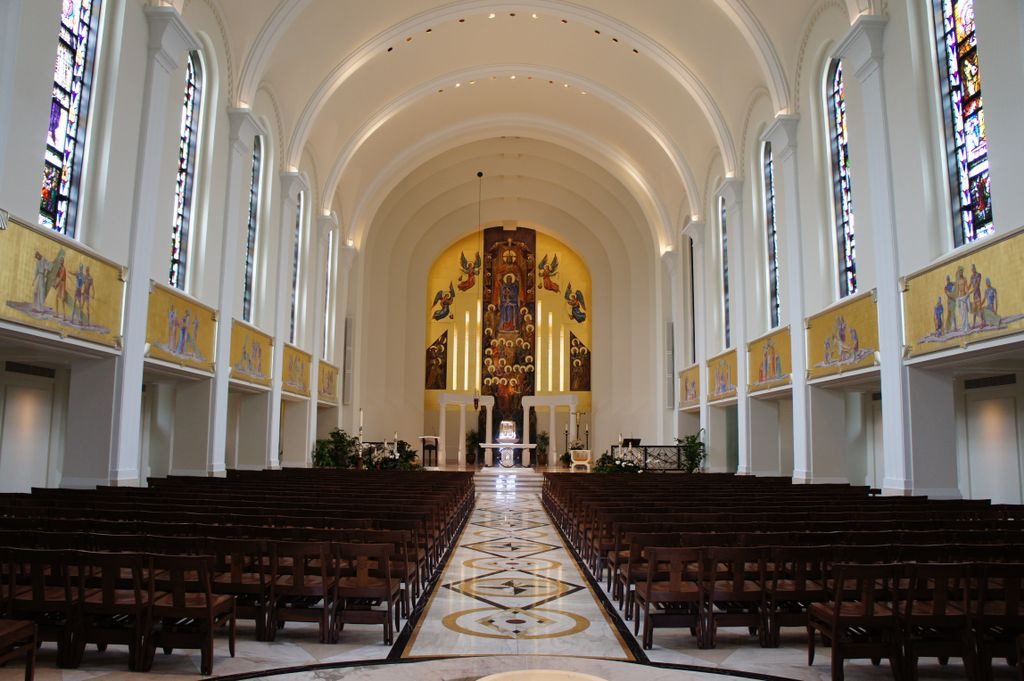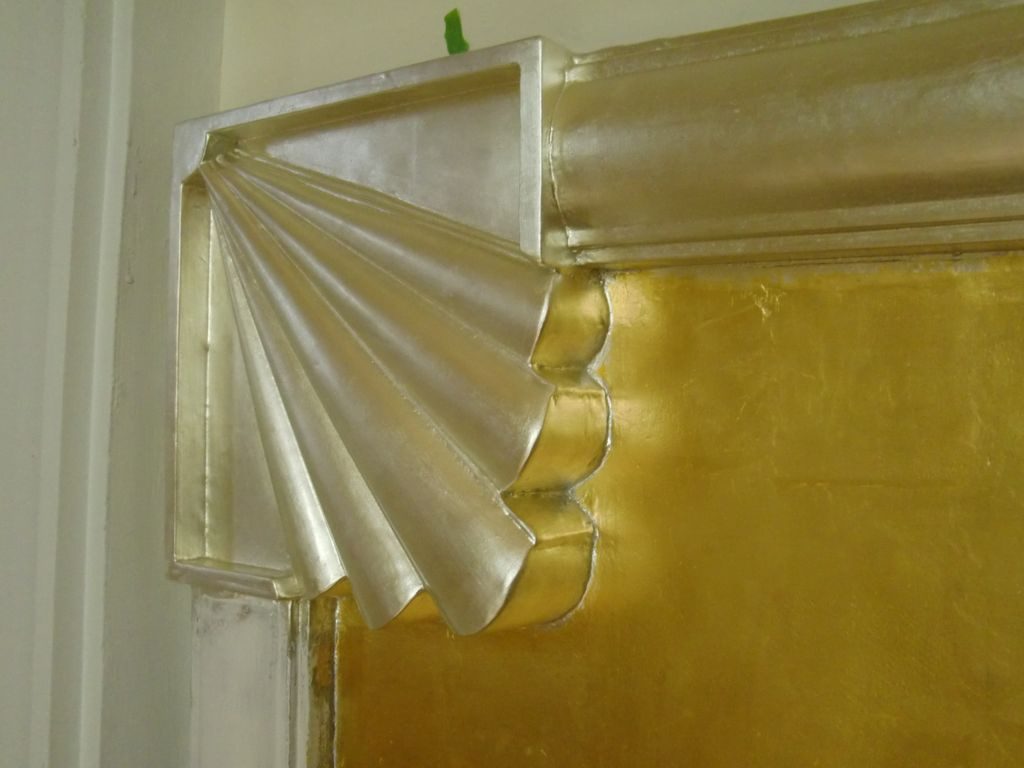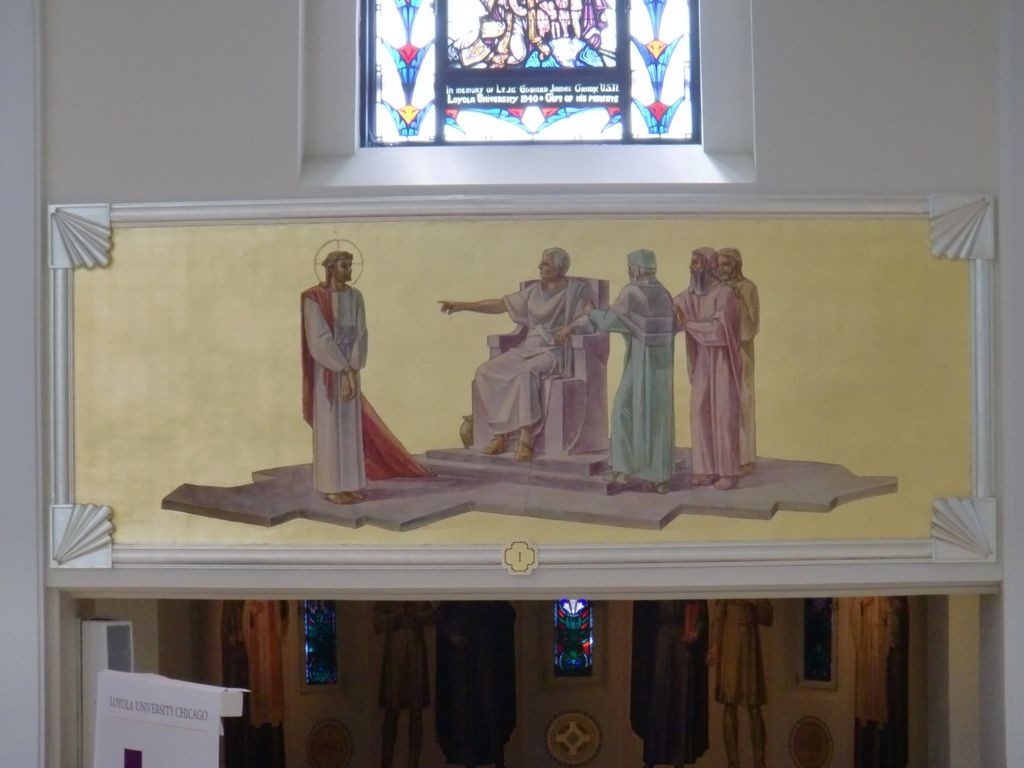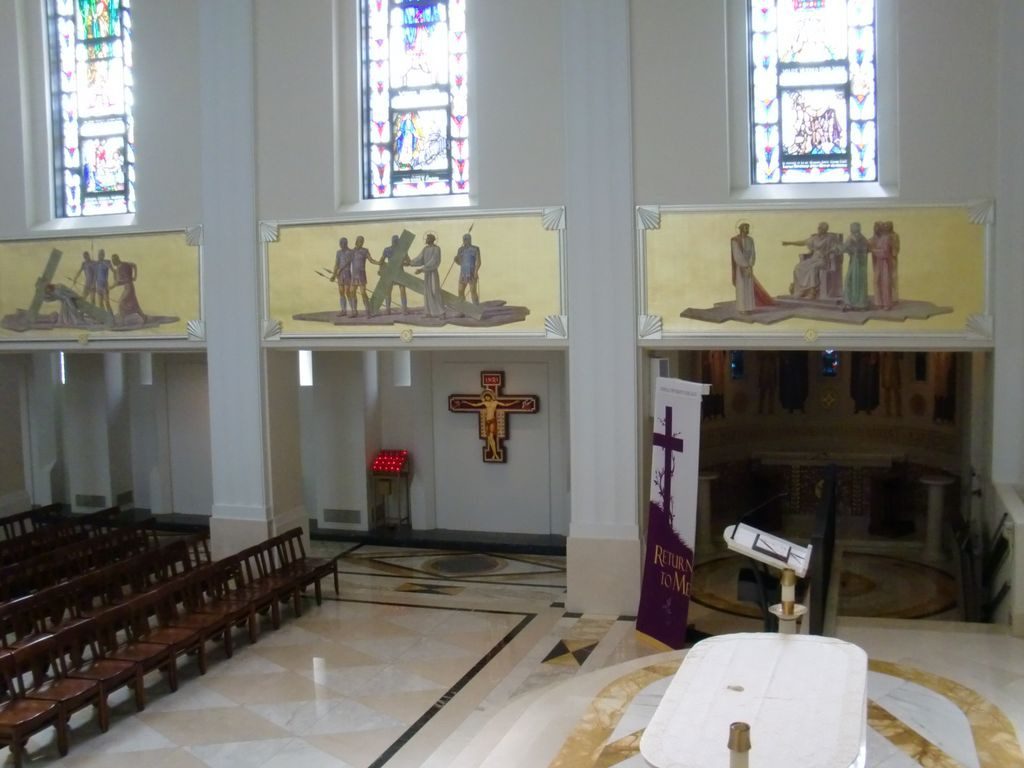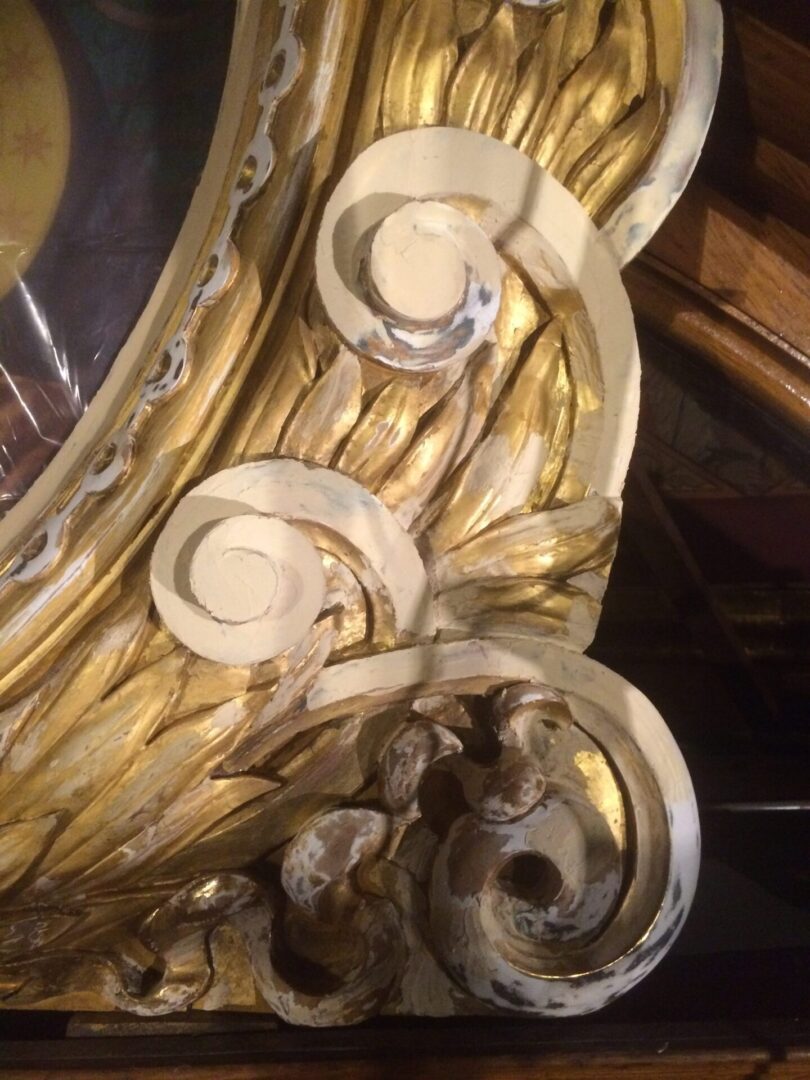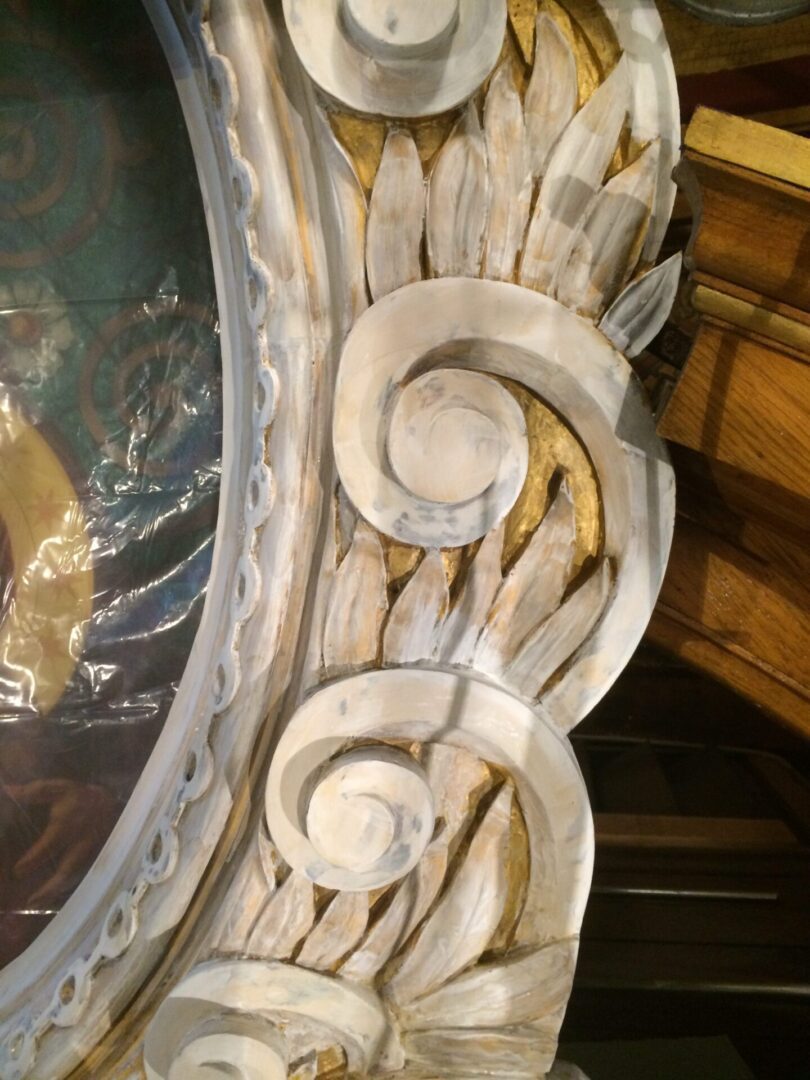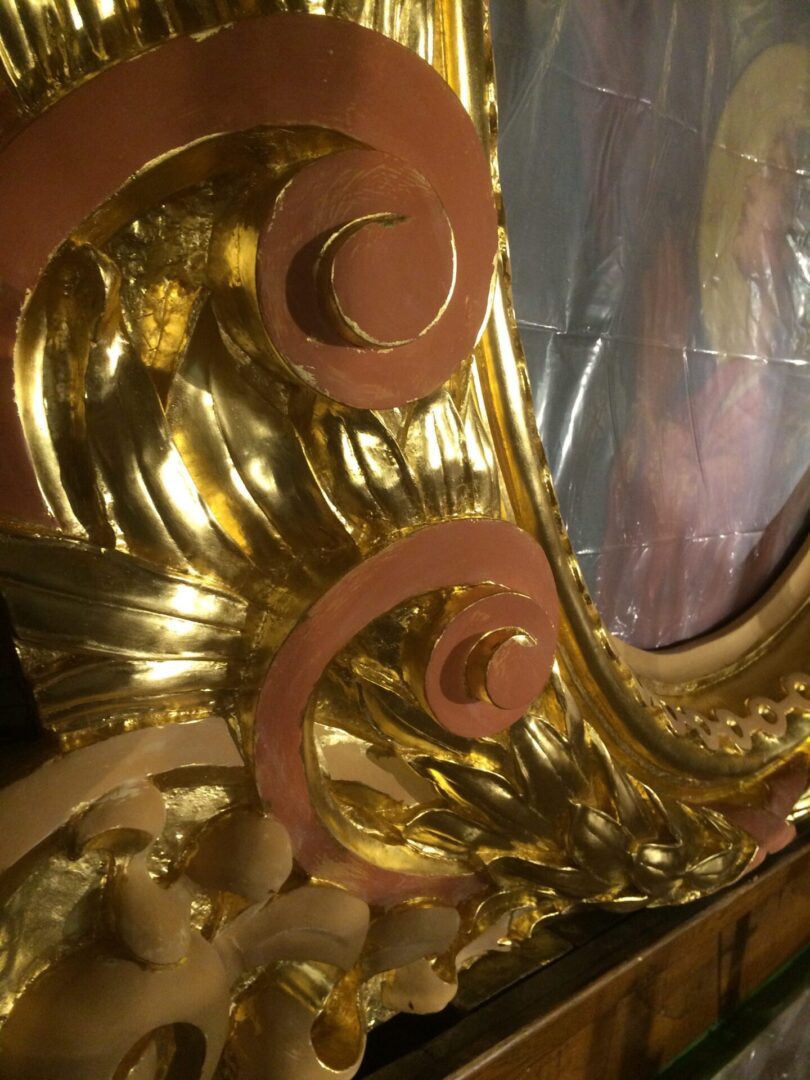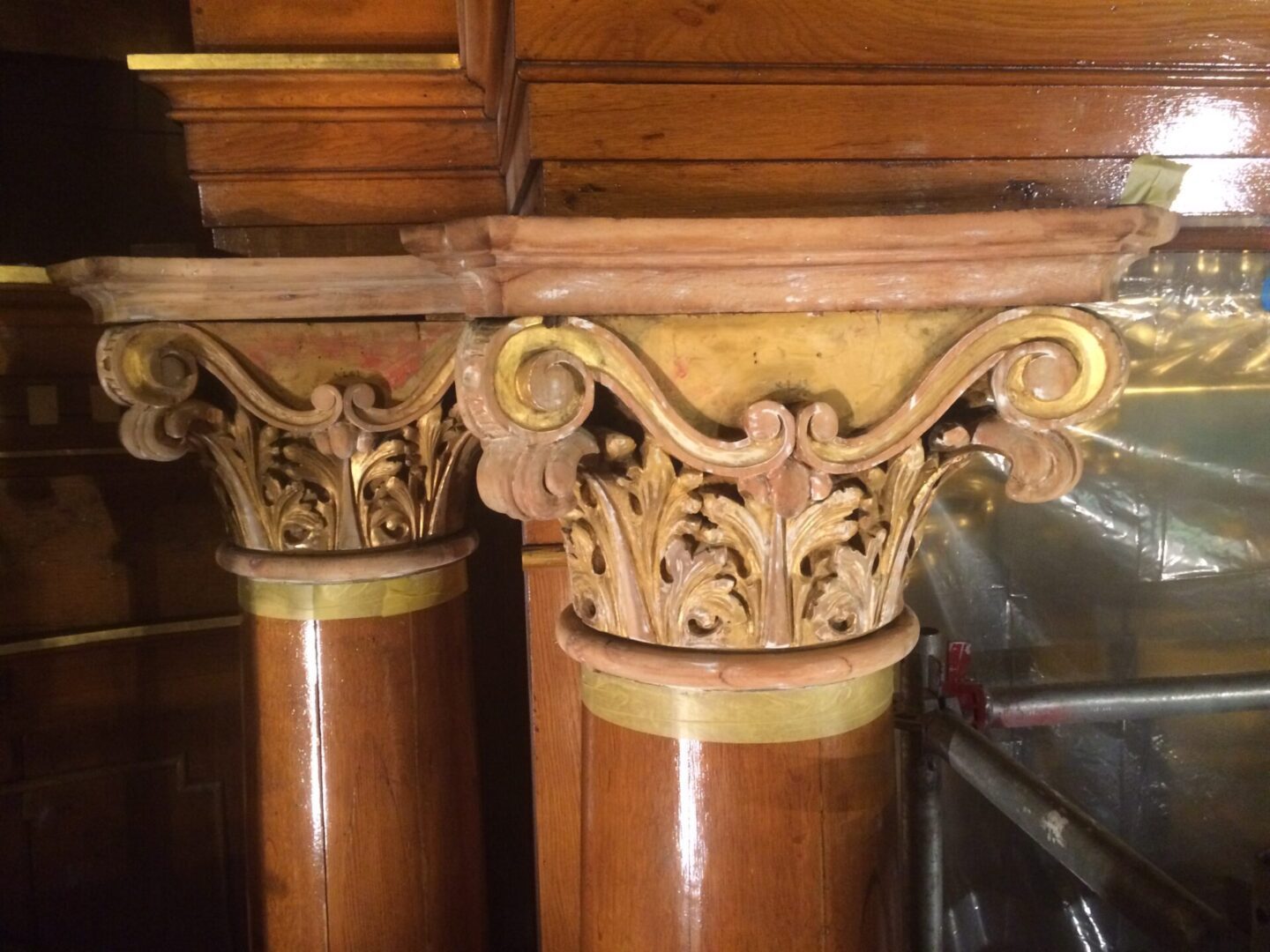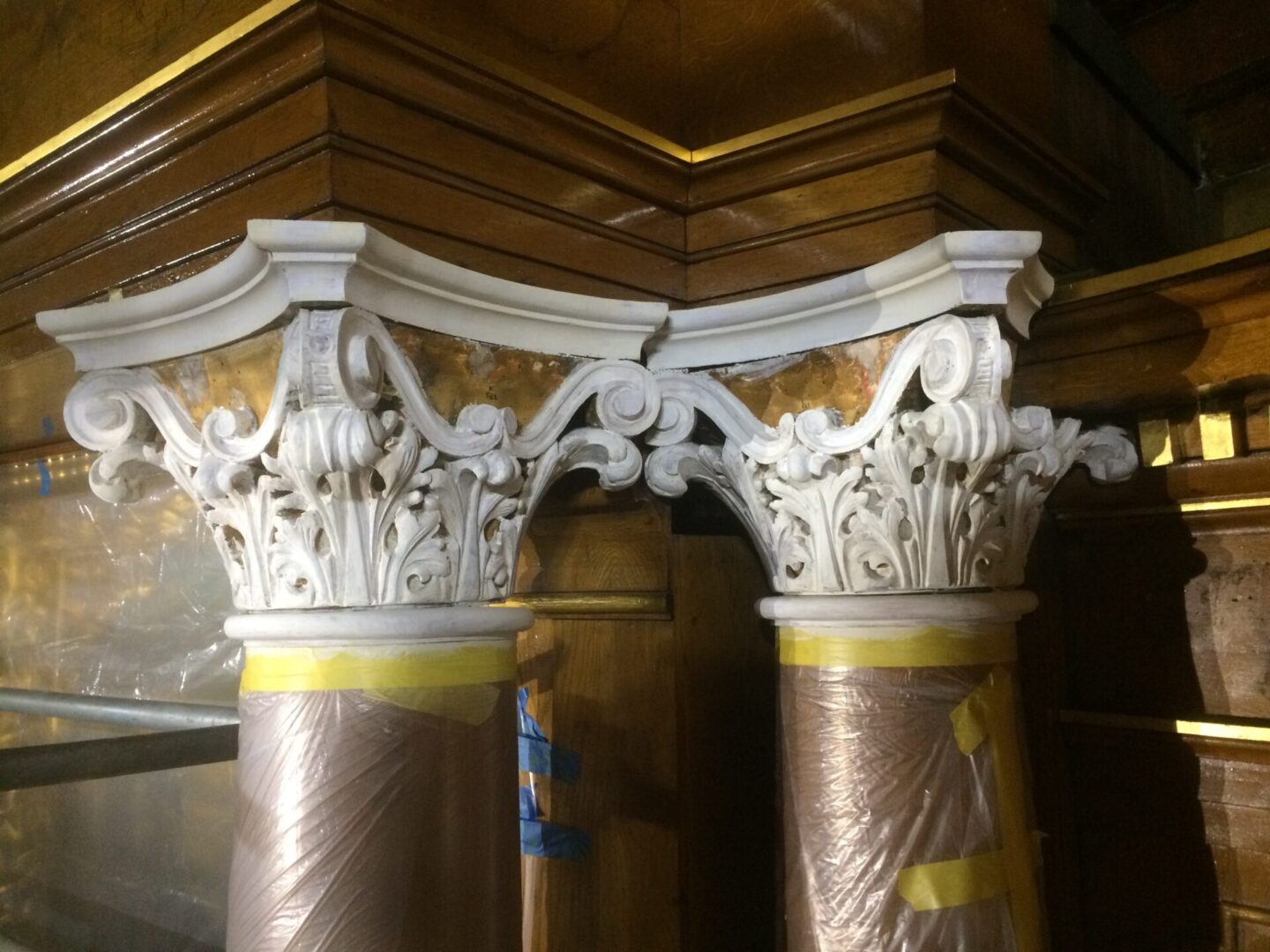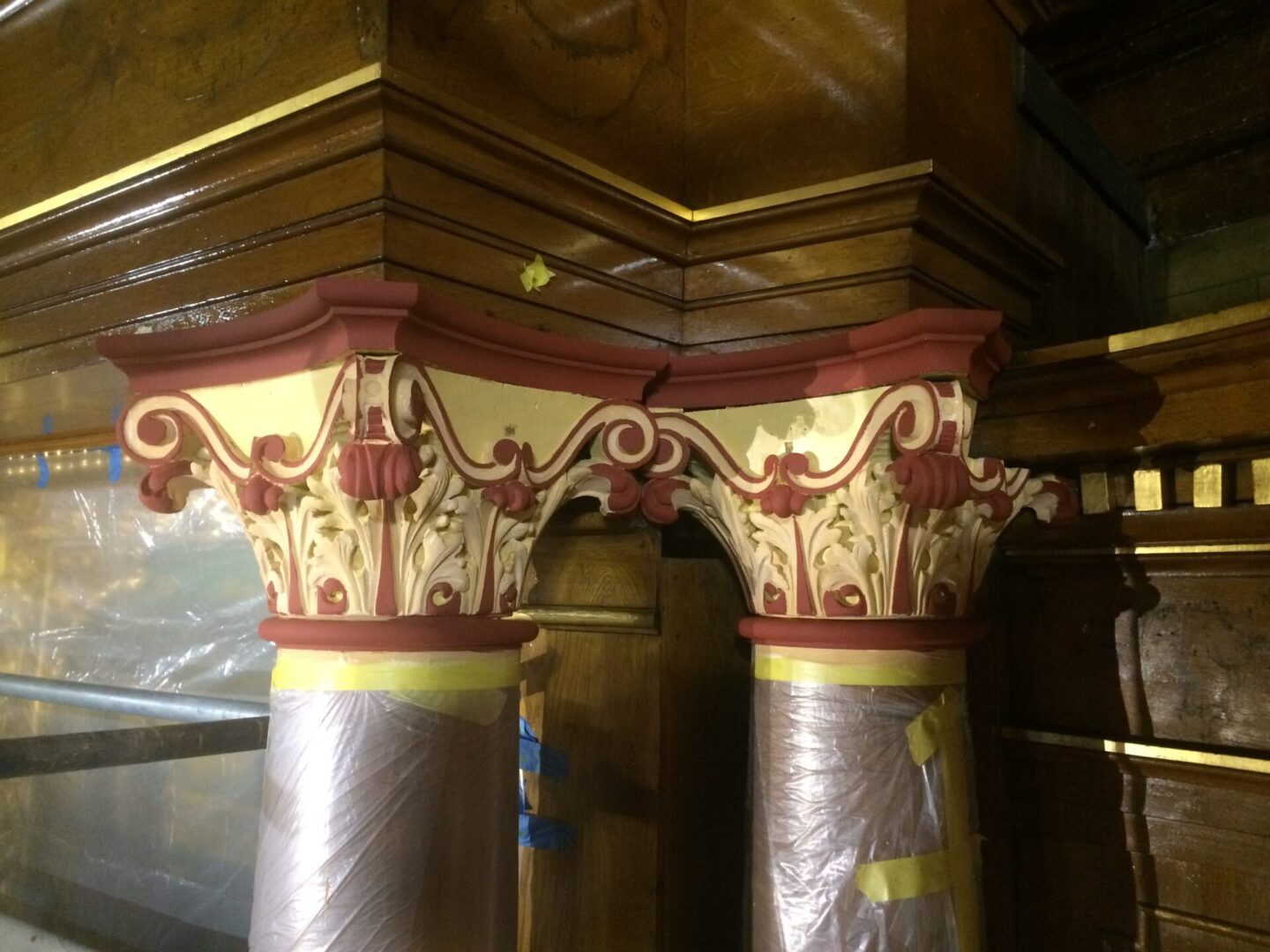After years of our presence in the field, we are recognized for the highest quality of gilding employing both modern and traditional techniques. We use beautiful and sophisticated shades of gold from 12 to 24 Karats (ducatten, rosanoble, moon, lemon, pale, or white) as well a silver and cooper leaf.
We perform architectural gilding on the exteriors and interiors of churches and public spaces. In our studio we are able to handle gilding conservation in house, or offer complete ‘on site’ services. The chief of this department is talented and irreplaceable Thomas Slabonski, a master of gilding and carving.
Our Work
Niche Restoration in Epiphany Church - Original wall decoration gilding - 20th century
On left: Before conservation. Layers of overpaint were removed from the wall and unveiled the original and poorly preserved gilded decoration.
On right: After conservation. The gold was restored with 24 karat gold leaves, forming a background for sculptures restored simultaneously.

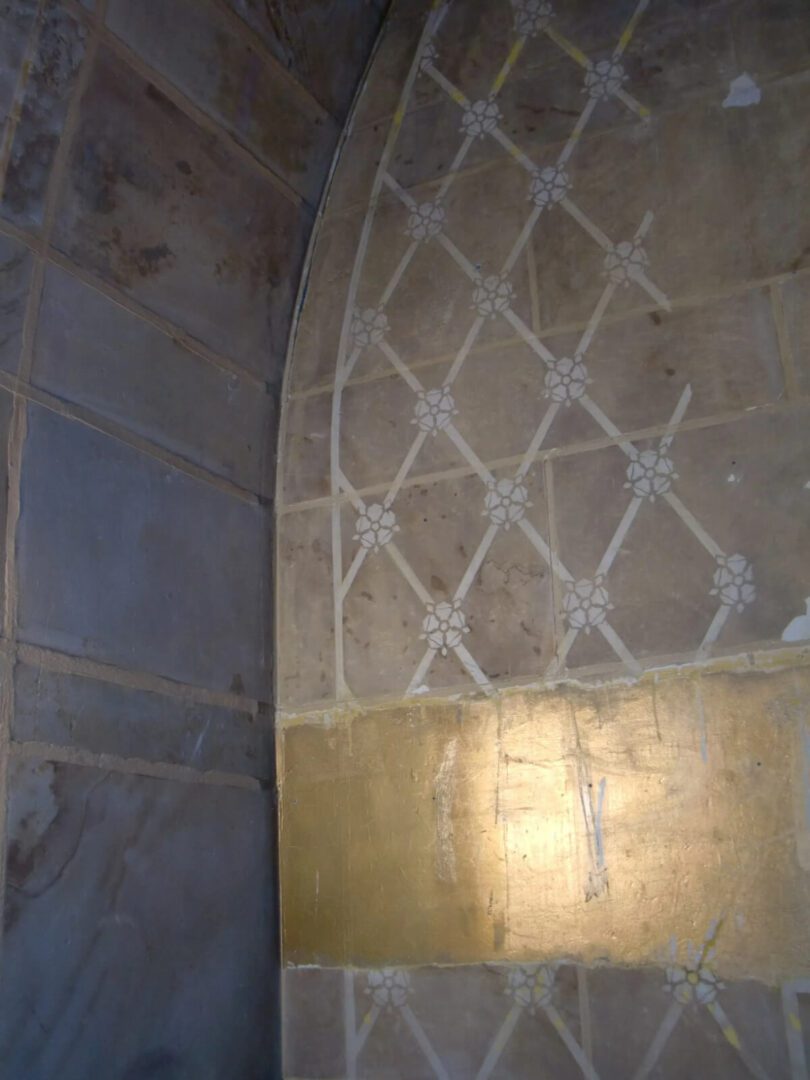
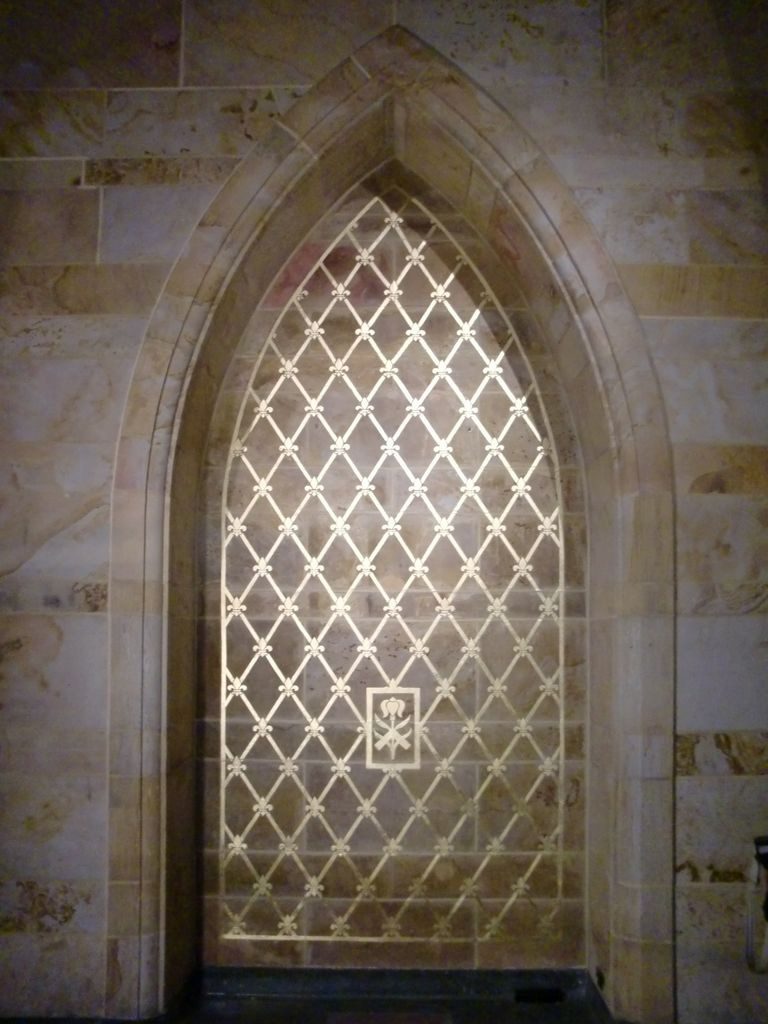
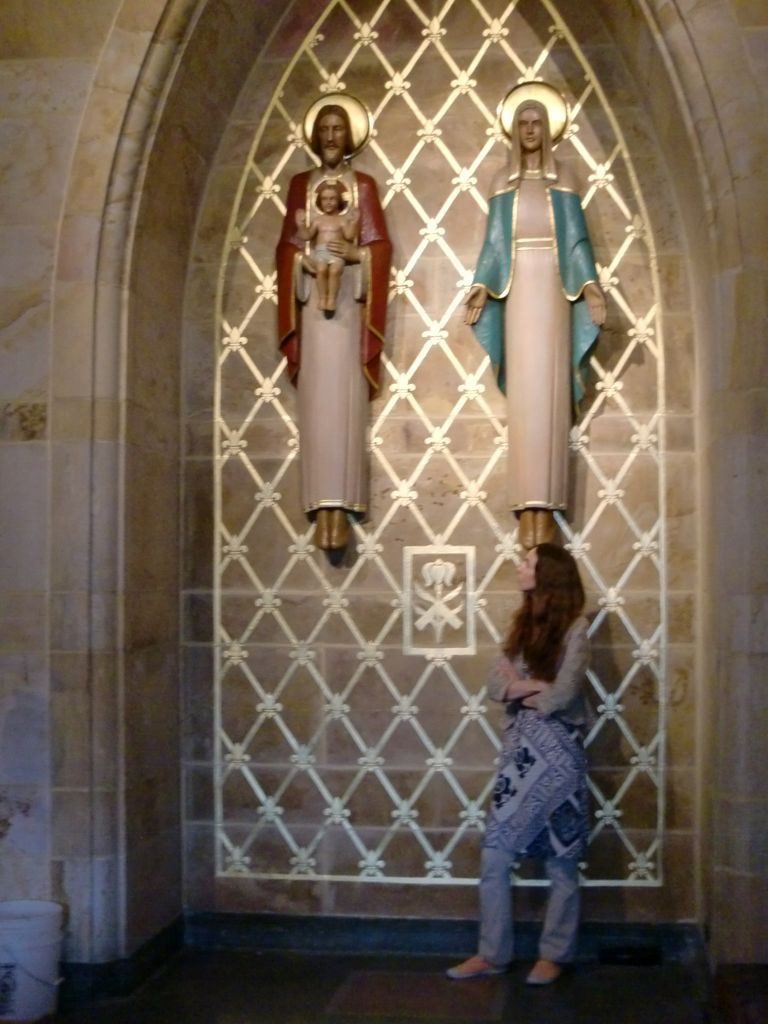
Ornaments of High Altar at St. Cantius Church in Chicago - Gilded wood - 19th century
1st Row: Before conservation. Significant losses in ornamentation, and cracks throughout the structure. The gesso and gold leaf layer was destroyed.
2nd Row: During and after gilding. The ornament losses were sculpted and attached to the structure, and the wood was consolidated and filled to reinforce the stability. Then, the surface was gilded with 24 karat gold leaves.
3rd Row: Before and after treatment.
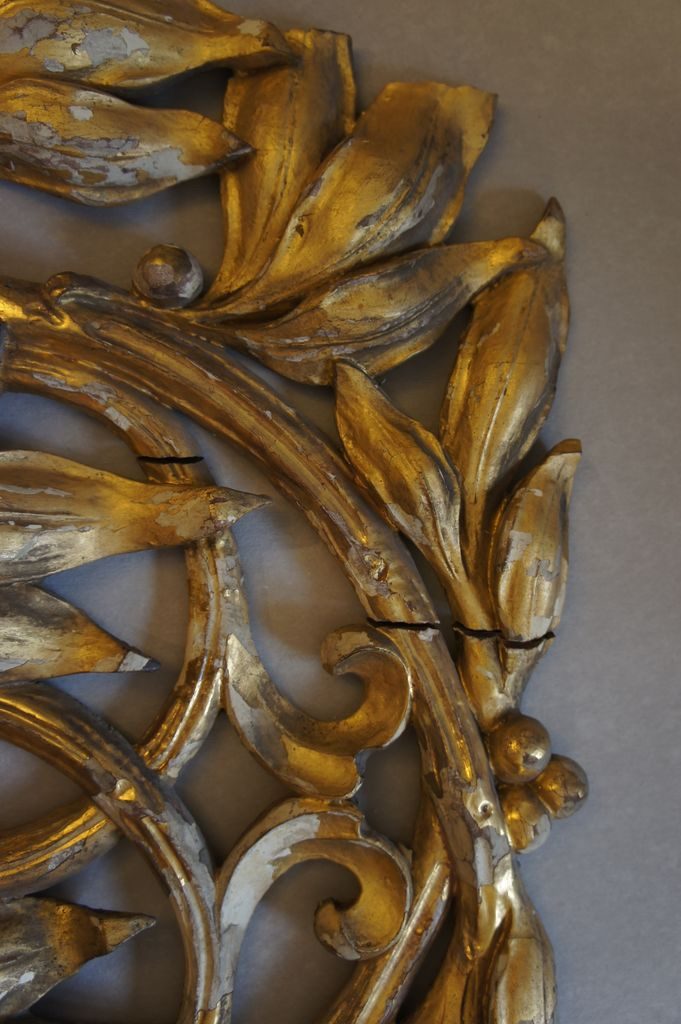

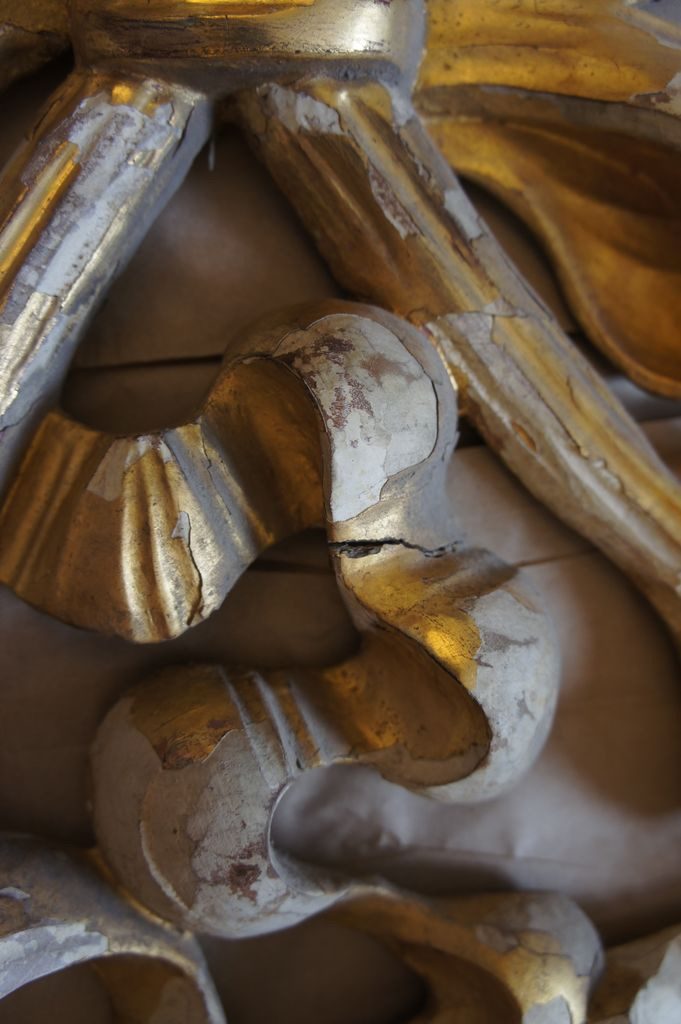
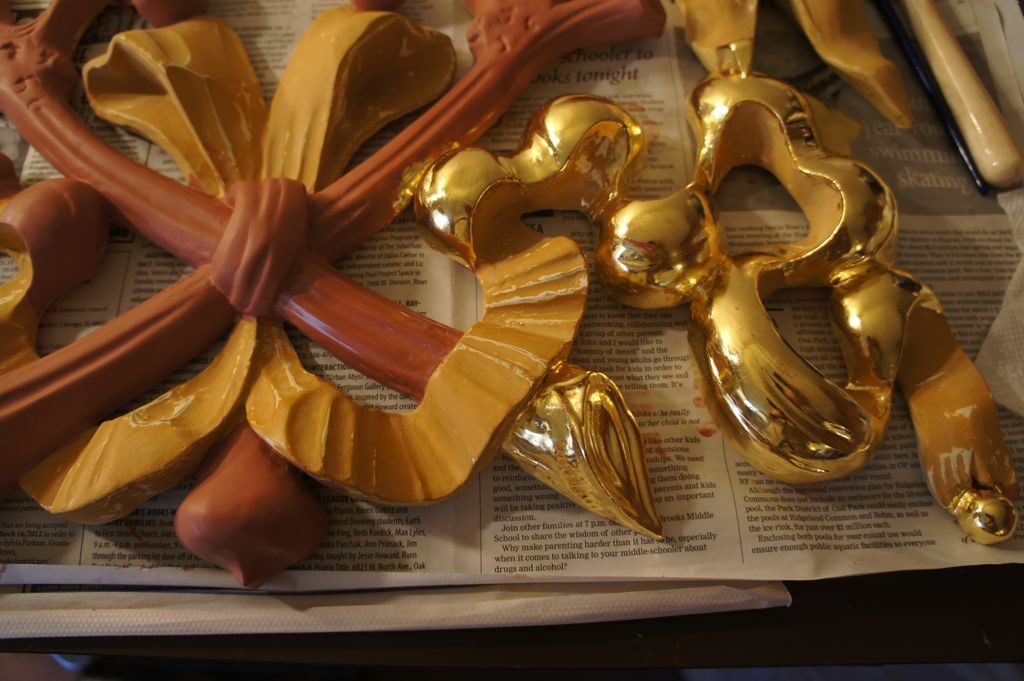
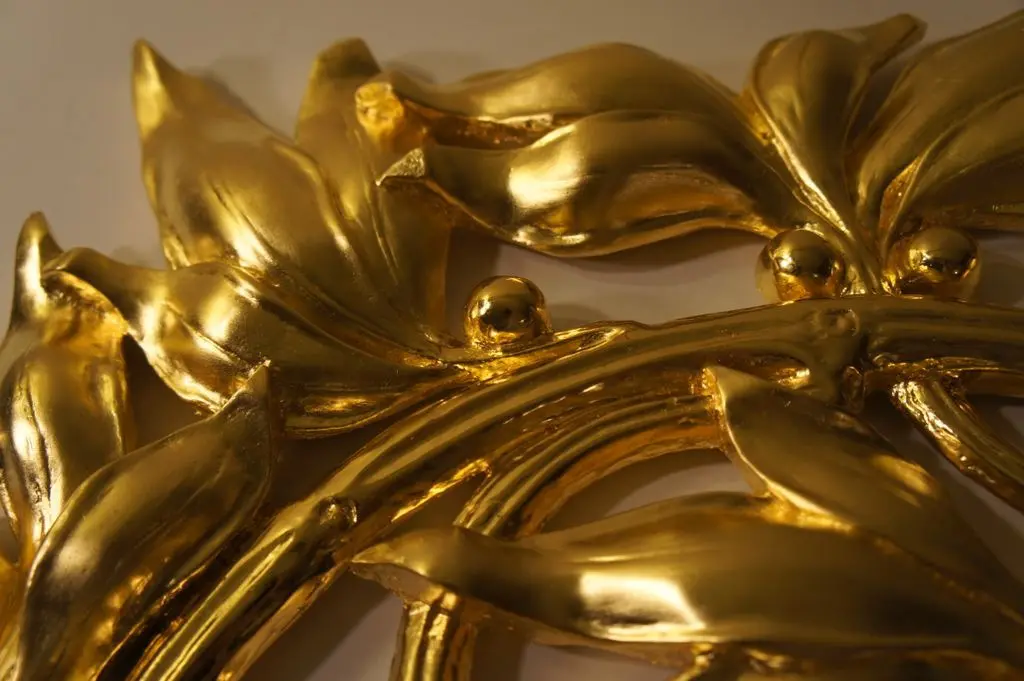
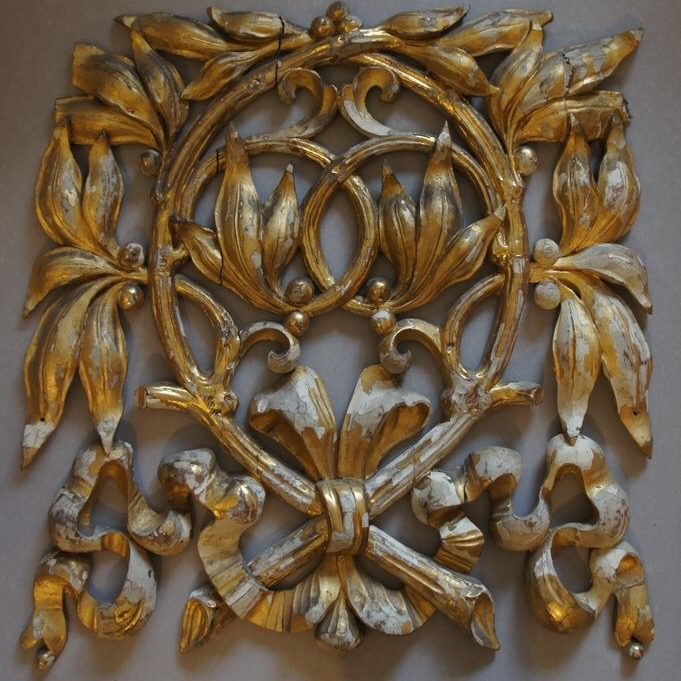
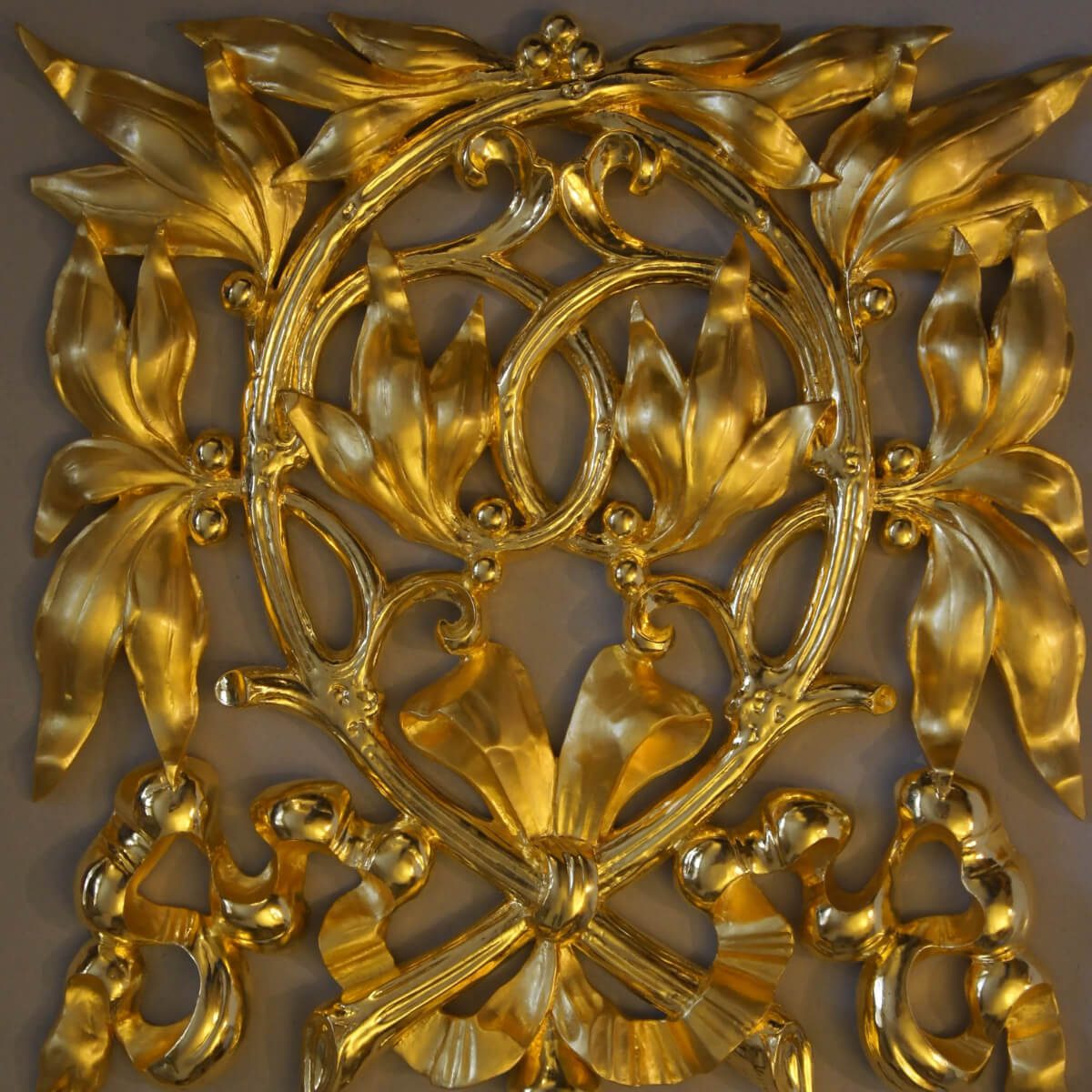
Main Altar of St. Cantius Church in Chicago - 19th century
Pictured below: Different stages of the complex restoration of the entire main altar at St. Cantius church. The conservation consisted of dismounting all extensive ornamentation and their subsequent cleaning, consolidation, reconstruction of missing fragments, and then gilding with 24 karat gold leaves. On site work was simultaneously conducted to restore all the moldings, frames, and sculptures.
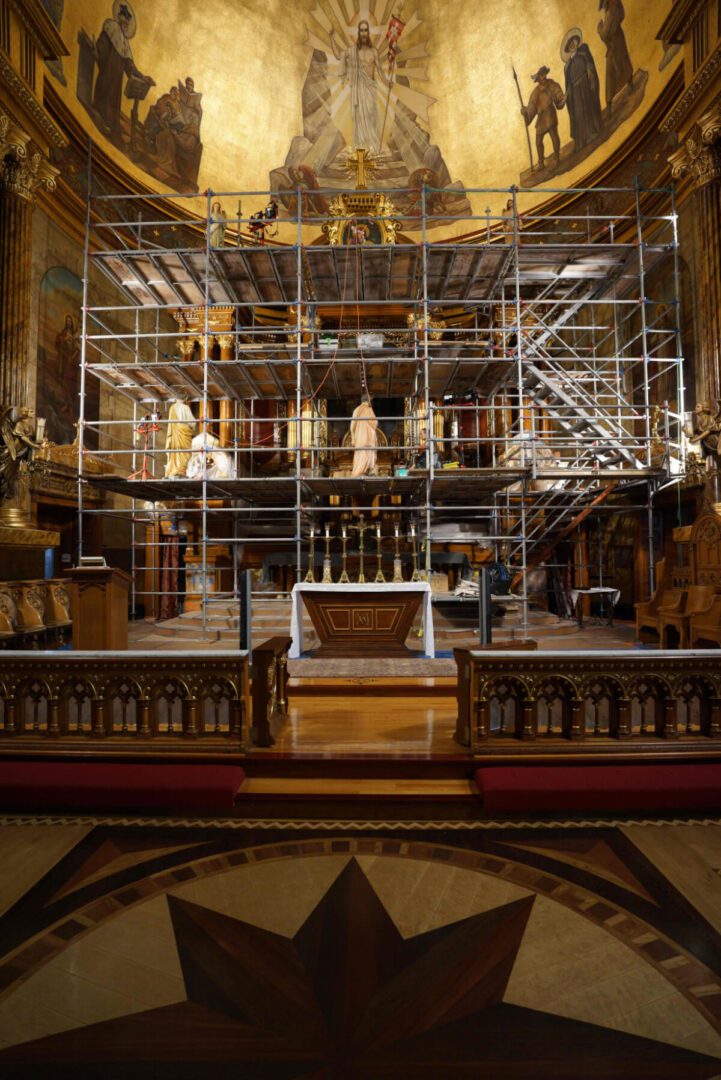


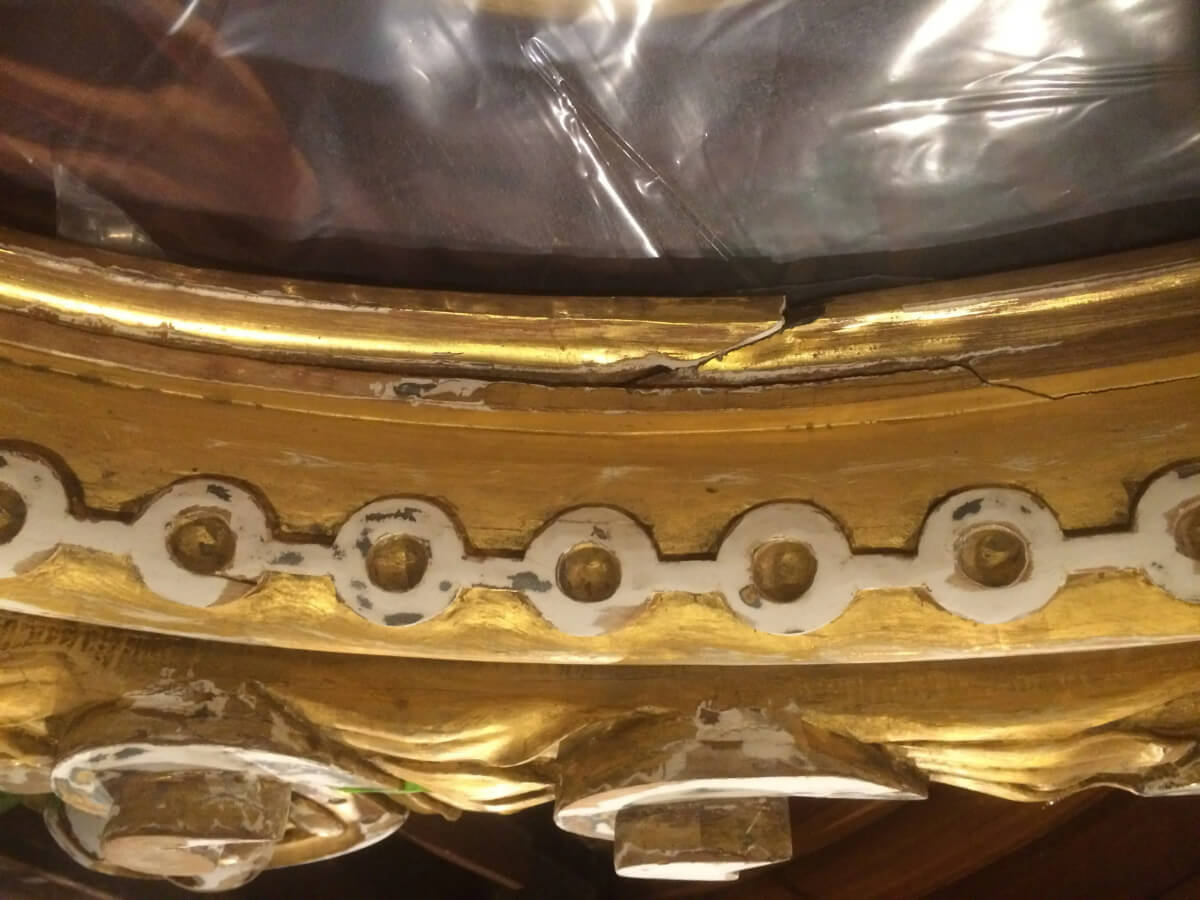

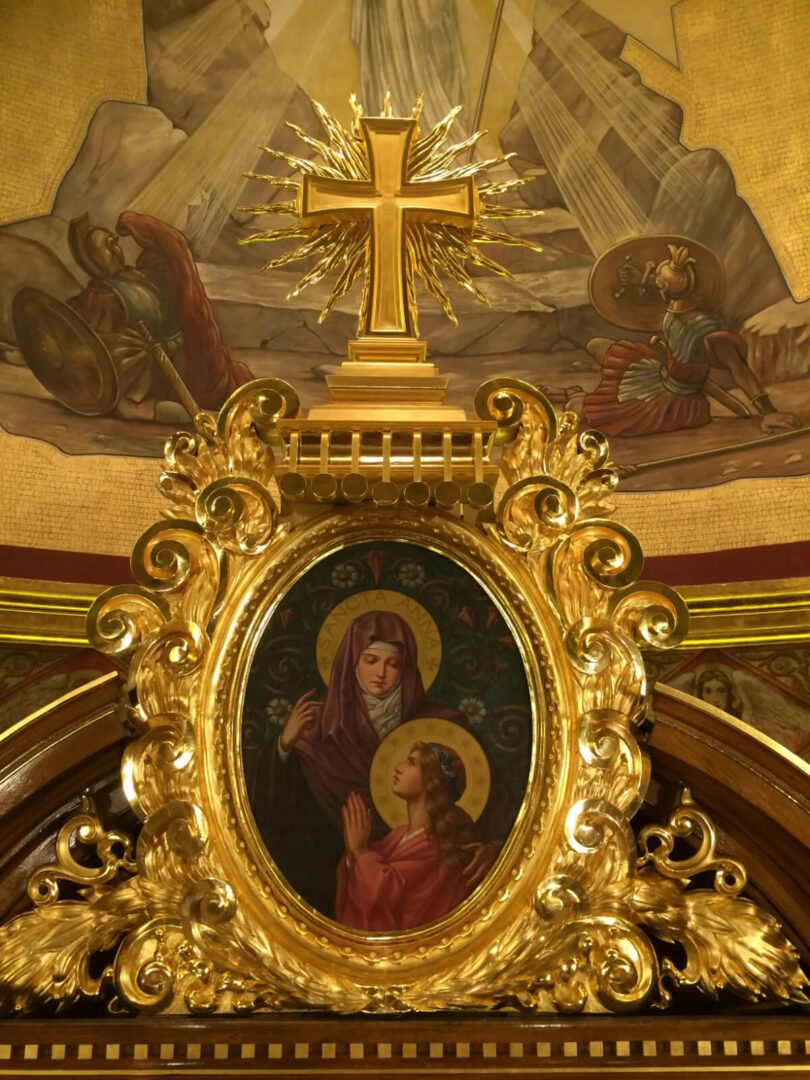

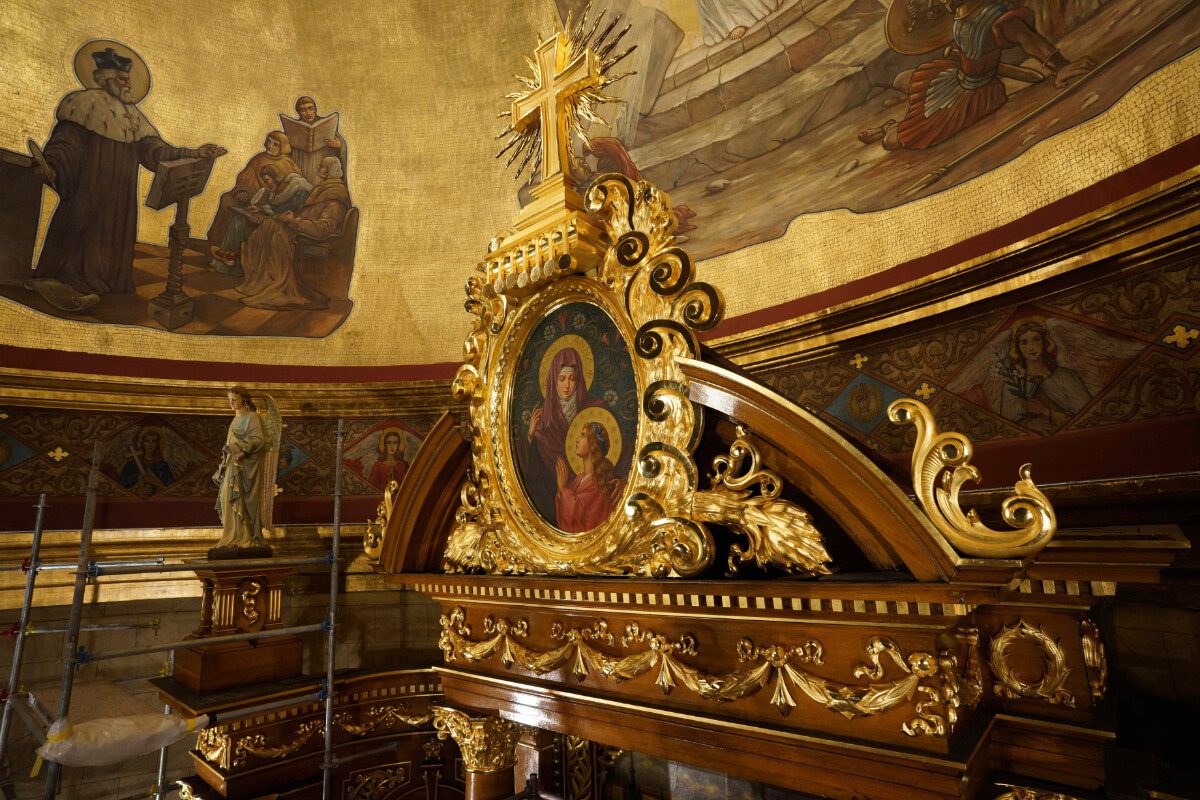
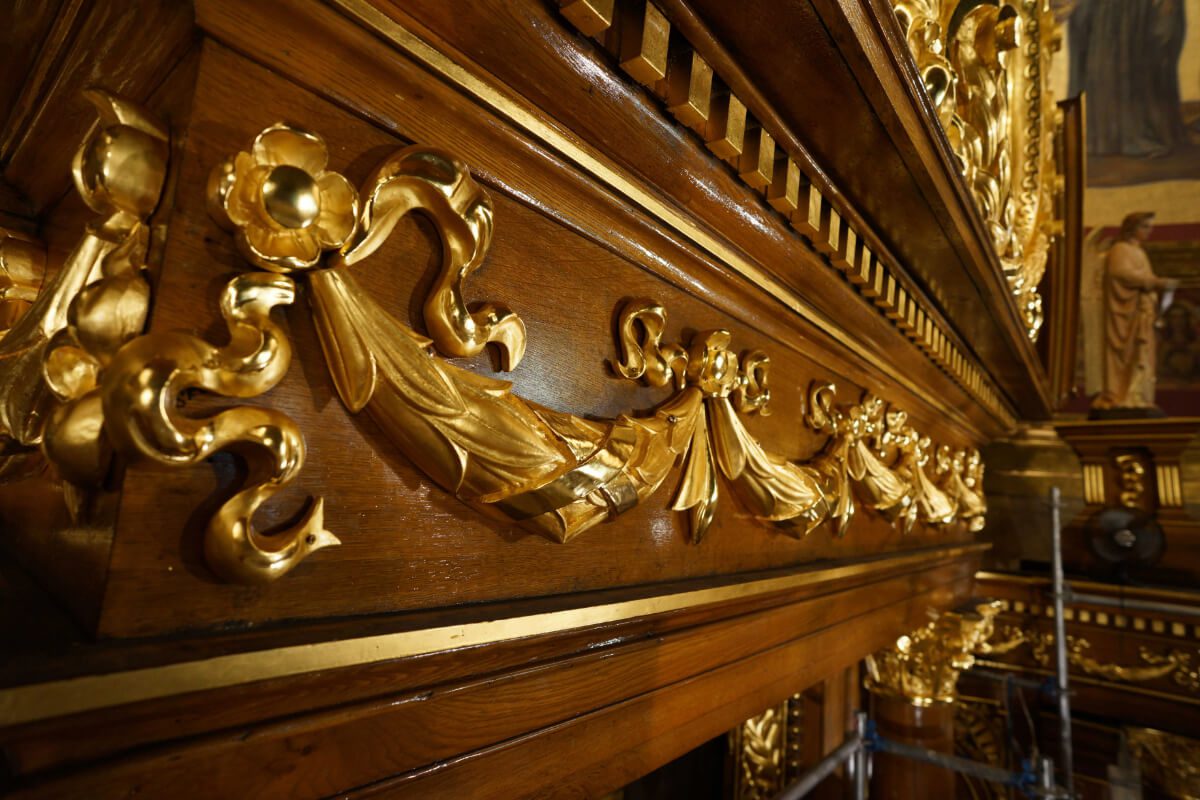
Capitals of Main Altar Columns at St. Cantius Church in Chicago - 19th century
1st Row: Before and during conservation. The left picture exhibits the degraded state of the capitals before restoration. There are losses in the wooden ornamentation, powdered structure, and the deterioration of gesso and original gilding. The middle picture shows the capitals after cleaning, reconstruction of missing fragments, consolidation of the structure, and application and sanding of new gesso. The right picture displays the preparation of the surface for gilding.
2nd and 3rd Row: After conservation. The surface was gilded with 24 karat gold on site. Complexity was introduced with burnished and matt surfaces to enhance the aesthetic value of the capitals.
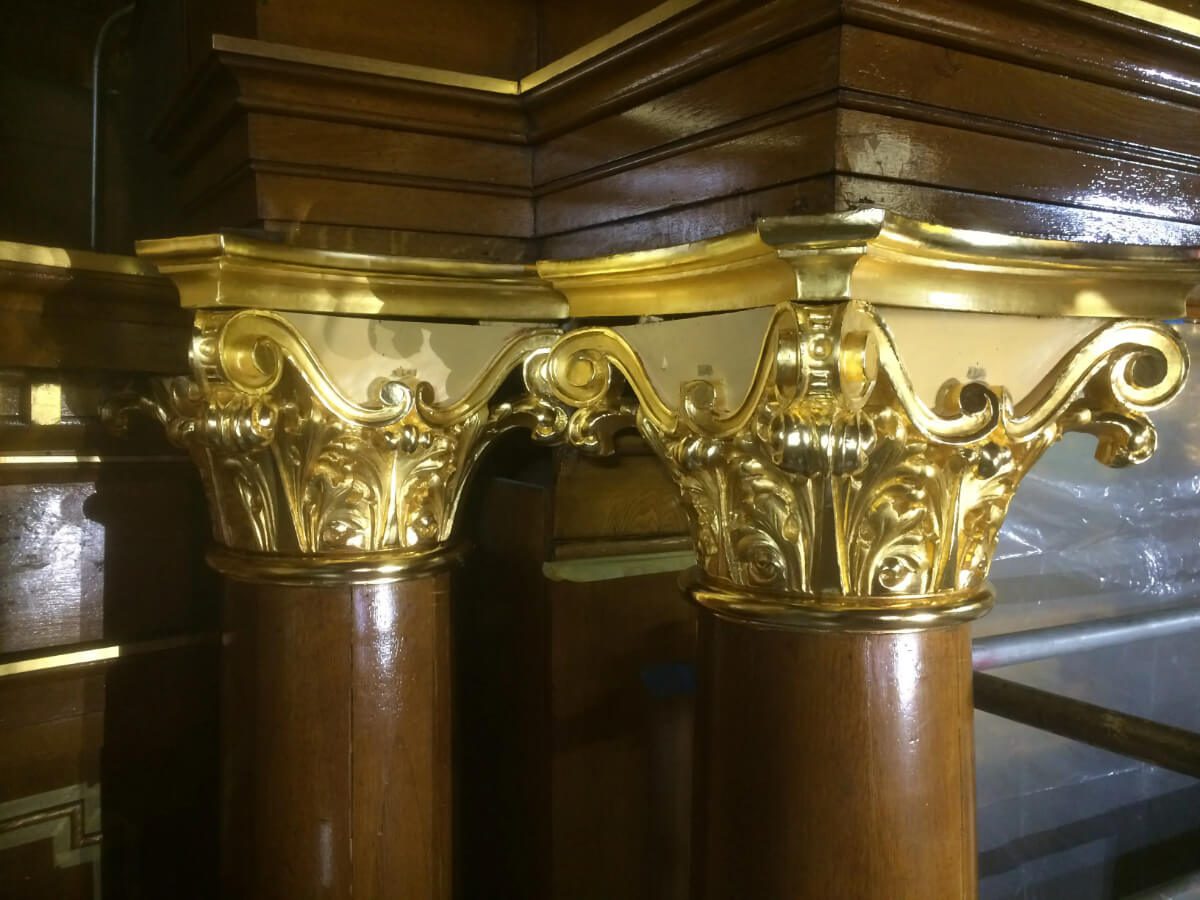
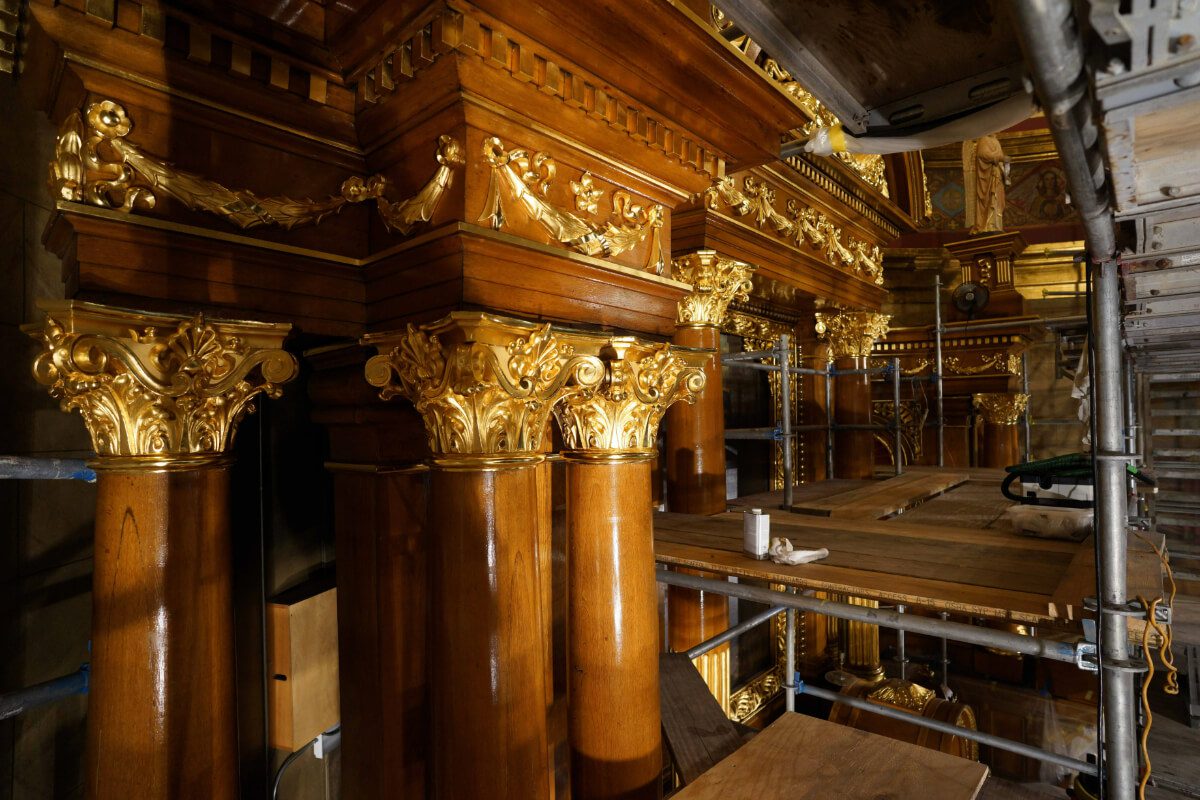
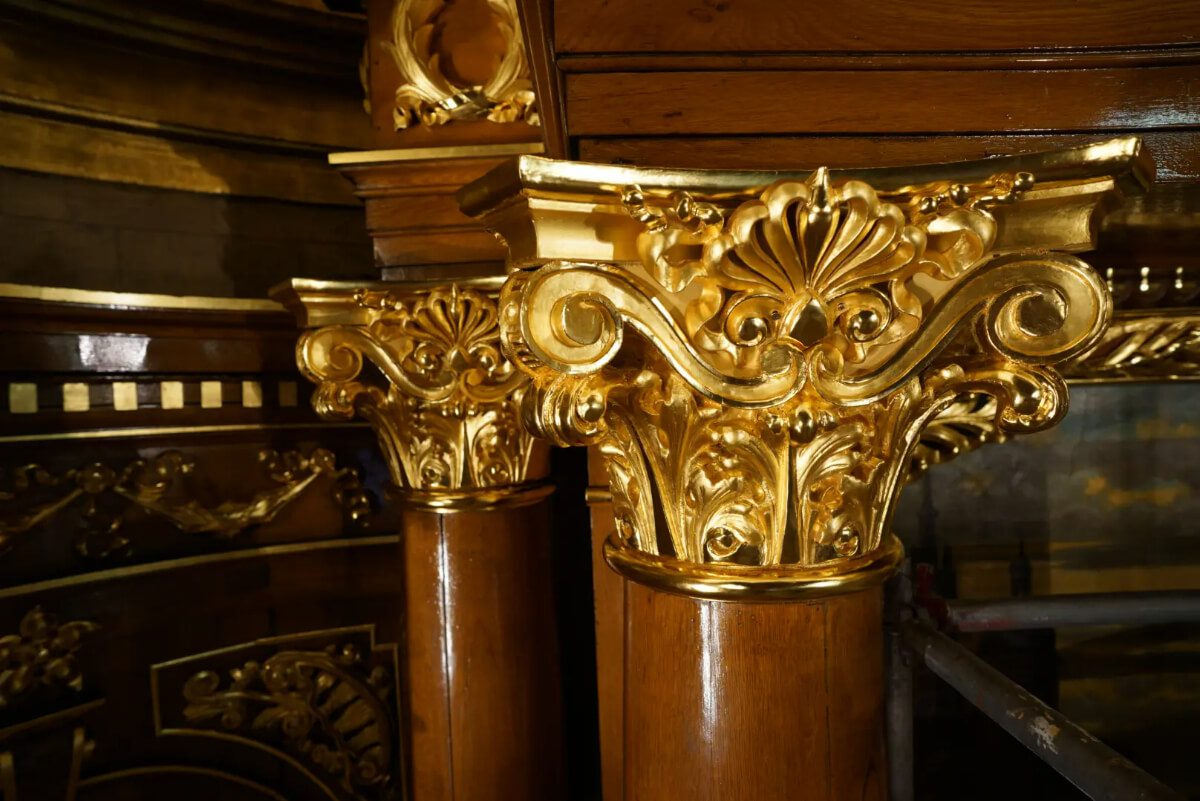
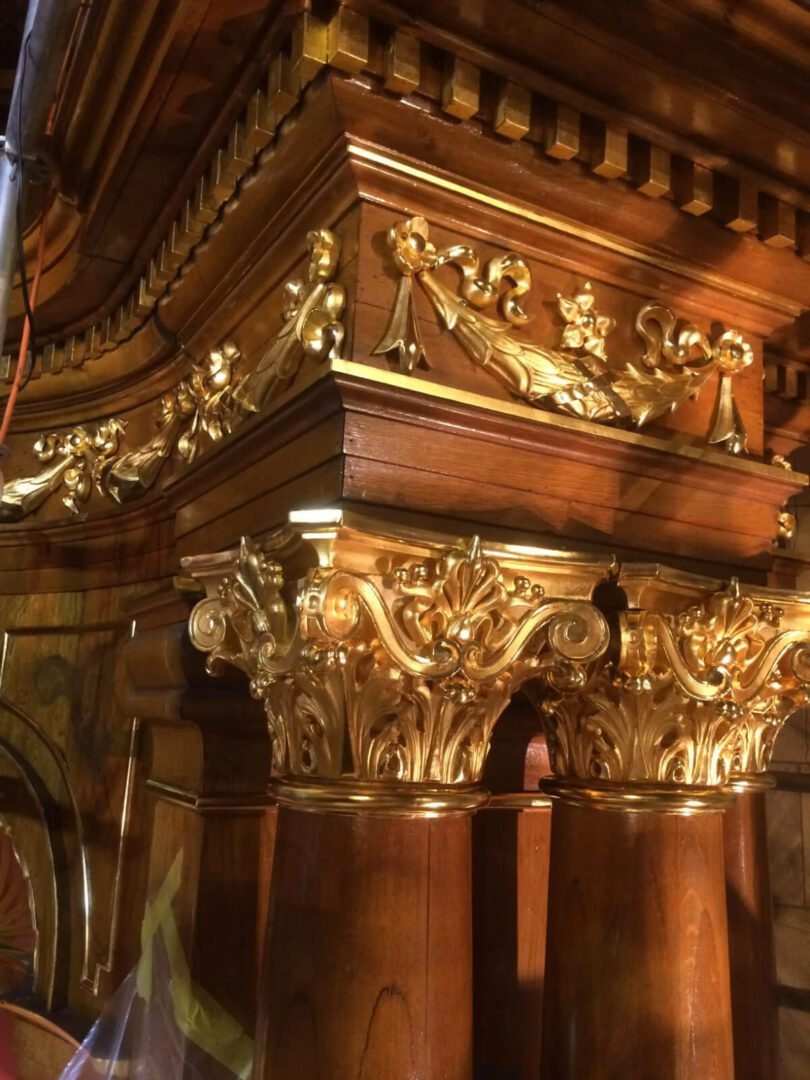
Ornament Decorations from St. Cantius Church in Chicago - 19th century
Left and middle: The process of gilding in the water technique is shown. The gold is being burnished with agate stone to give it a polished luster.
Right: Completed ornament mounted on the main altar.
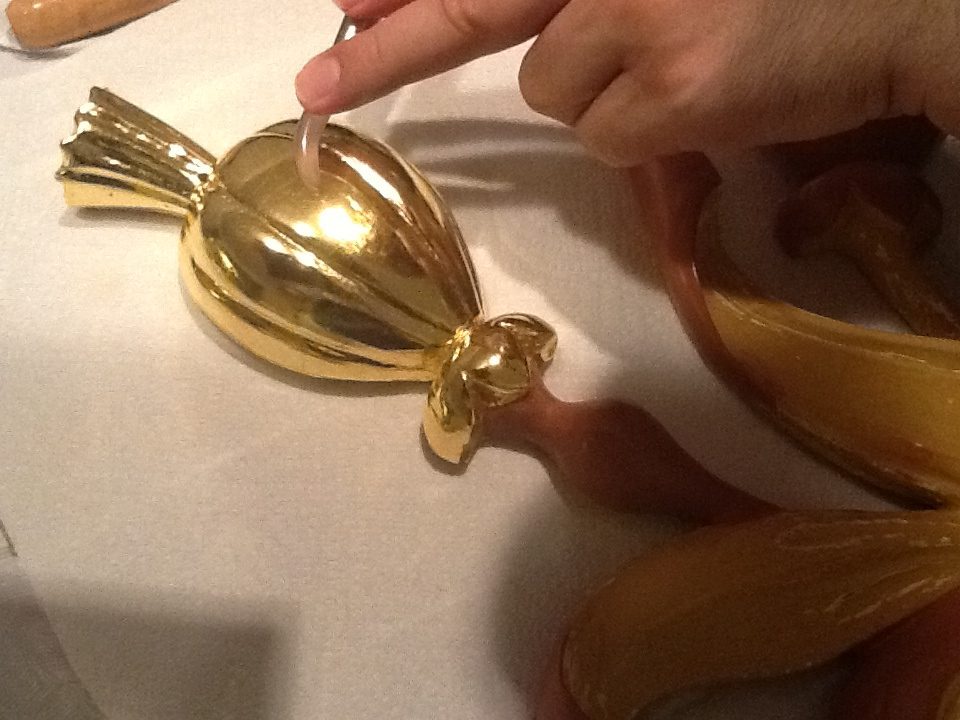
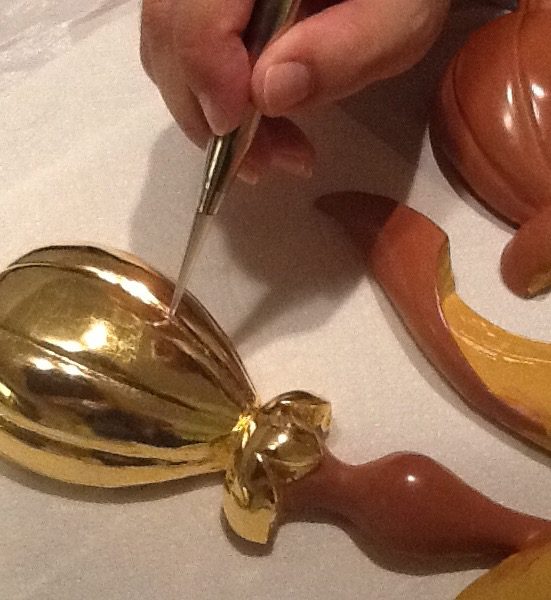
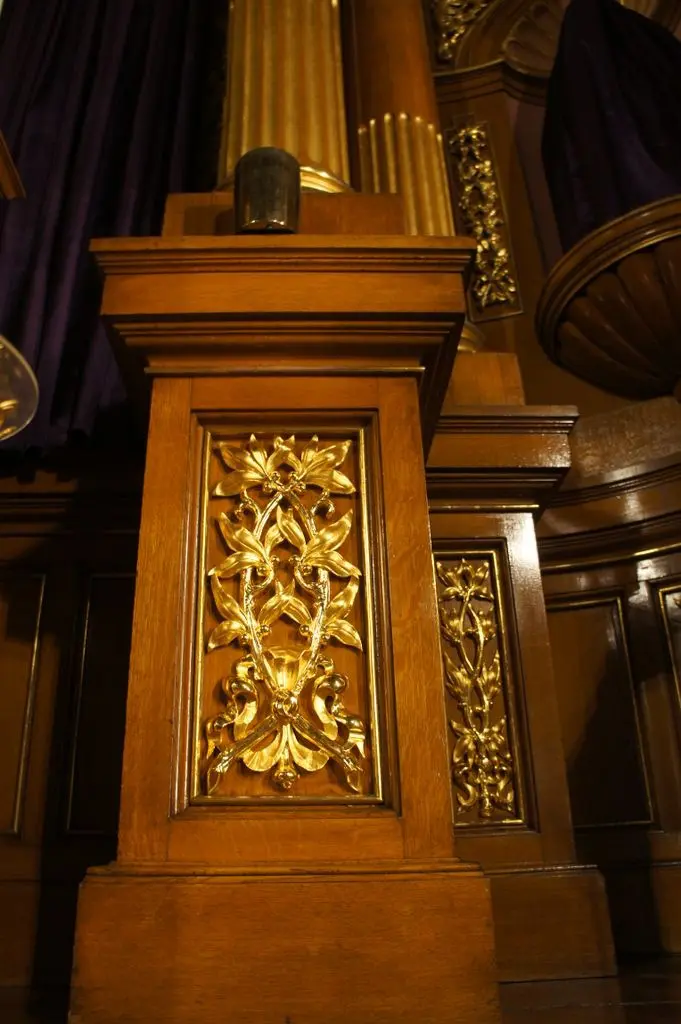
Tabernacle from St. Kostka Church in Chicago - 19th century
Below: Pictures of the completed tabernacle in front of the main altar of St. Kostka Church. A full reconstruction was first conducted of the wood, which was deteriorating and multiple elements were missing. Once restored structurally, all the elements were dismounted and gilded using 24 karat gold in the traditional water technique. The bottom of the table was then painted to create a marble imitation.
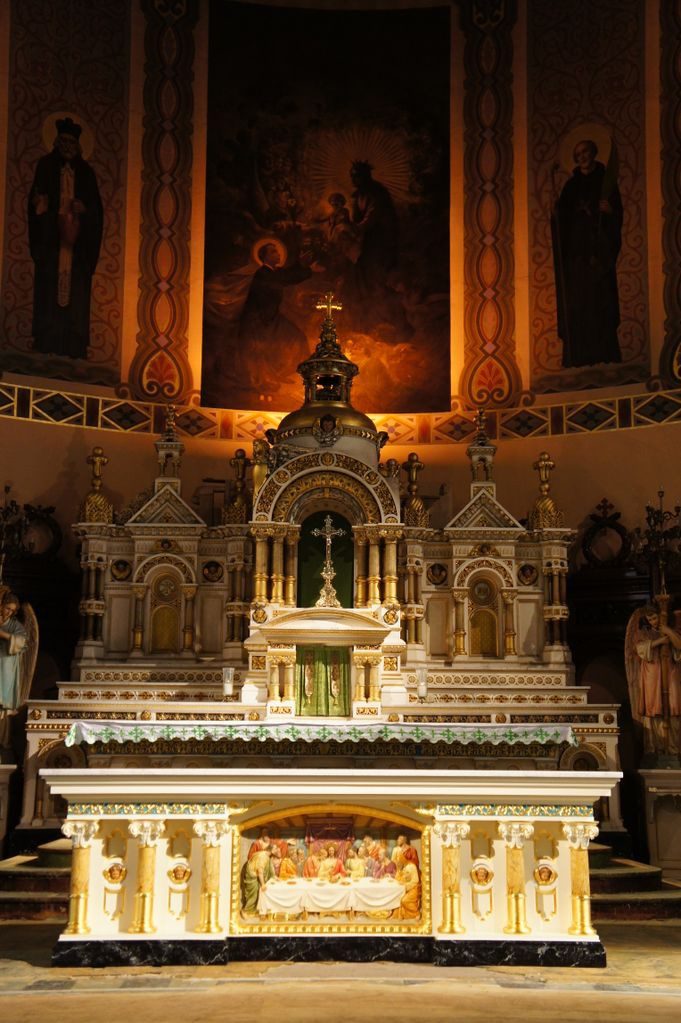
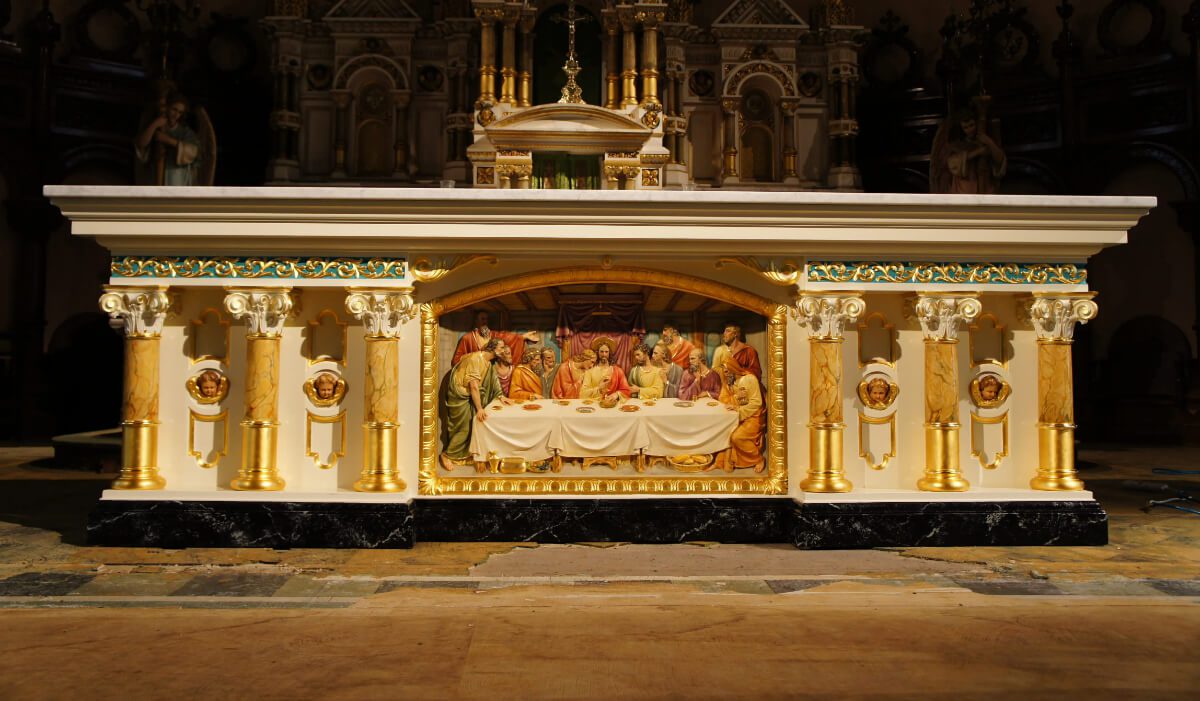


Ornaments from St. Kostka Church in Chicago - 19th century
Below: Before and after conservation.
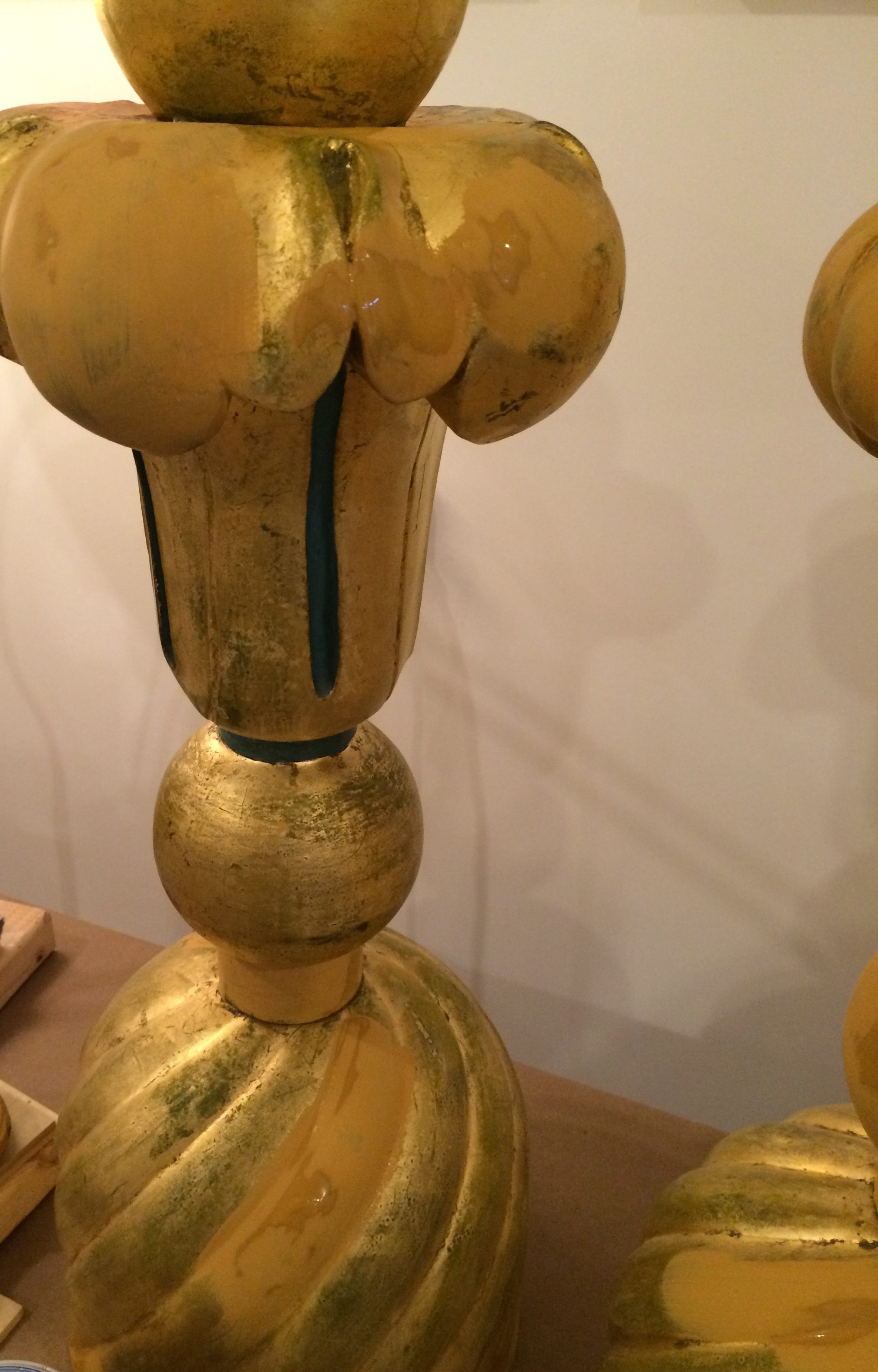
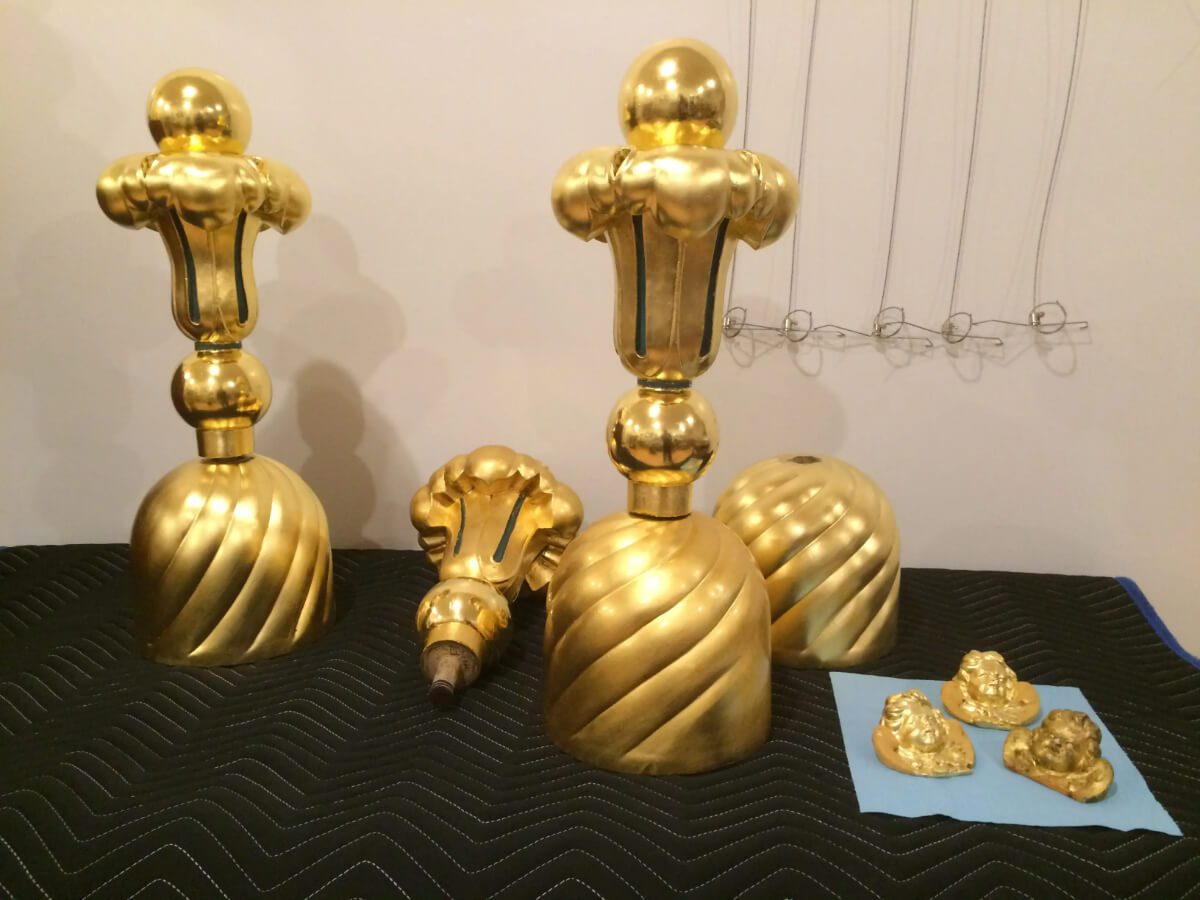
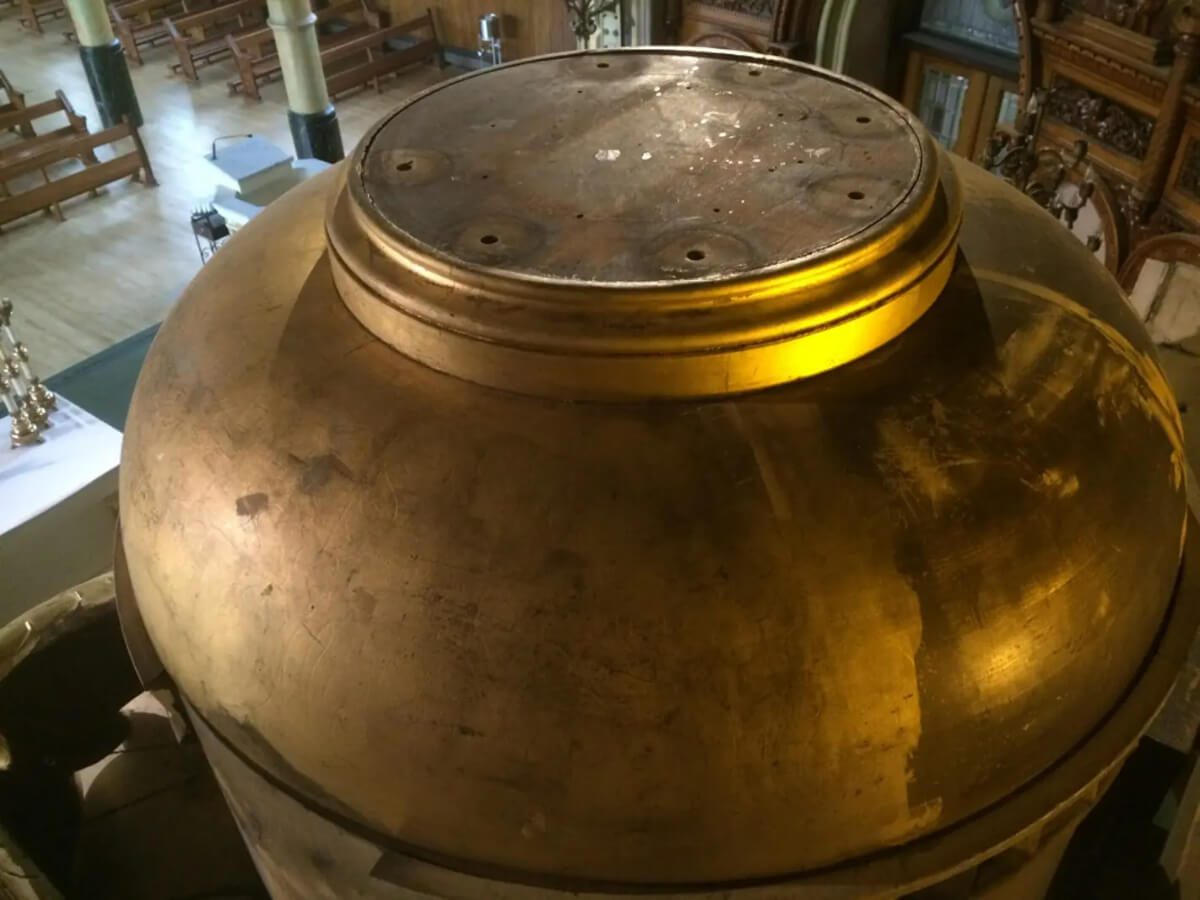
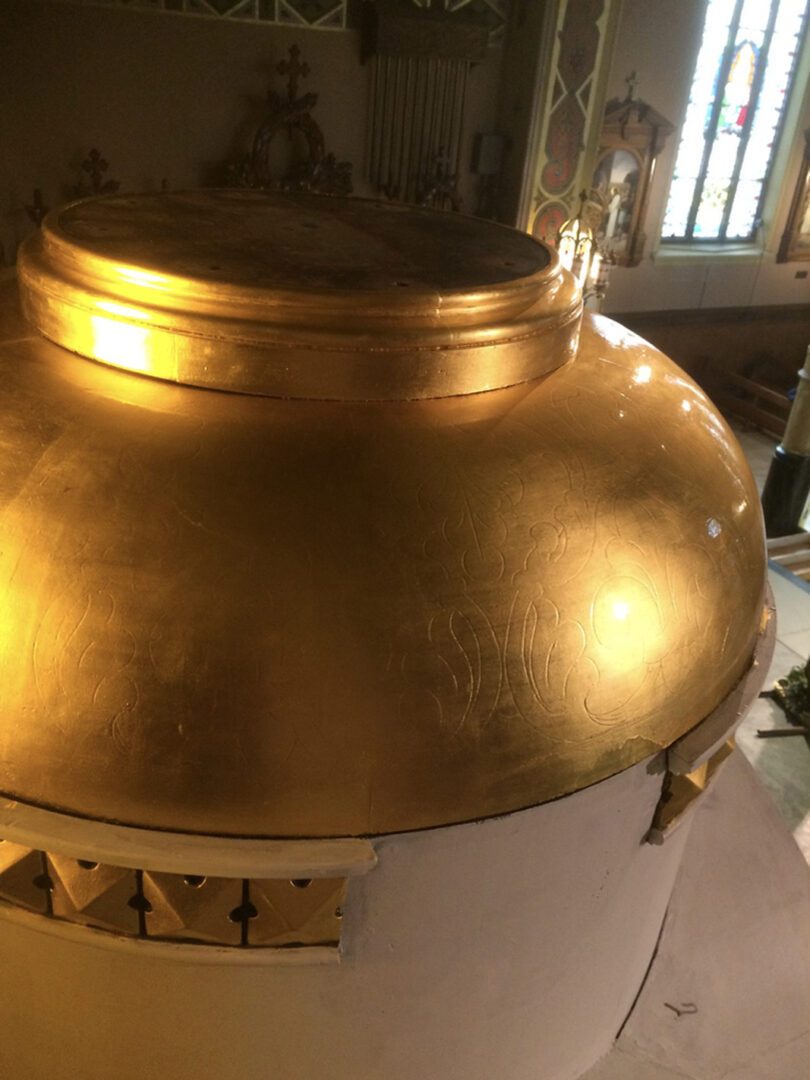
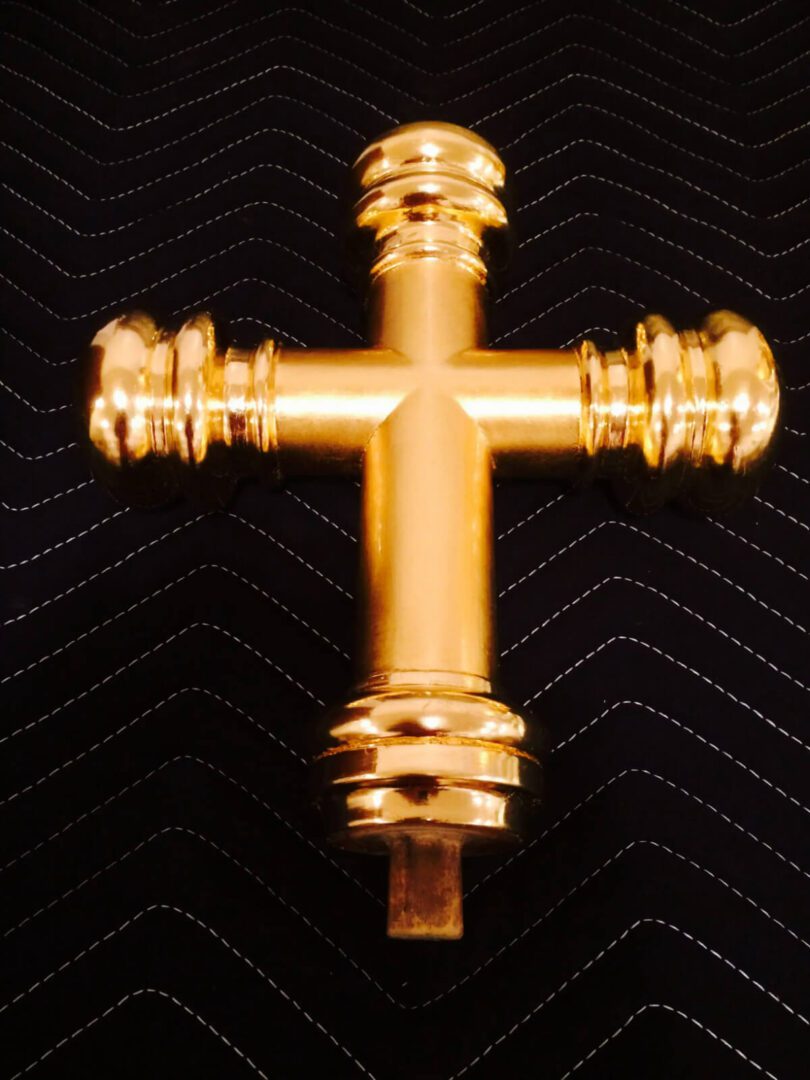
Ornaments from St. Cantius Church Chicago - 19th century
1st Row: Before conservation. The wooden ornaments were covered in preparatory materials for gilding.
2nd Row: During conservation. Red and yellow clay was applied. The red clay is used to cover areas where gold will be burnished, and the yellow clay where the gold will be matt.
3rd Row: After conservation. The wooden ornaments gilded with 24 karat gold leaves and later burnished to achieve a polished luster or kept with a matt appearance. Red cushions were then upholstered and inserted for displaying relics.
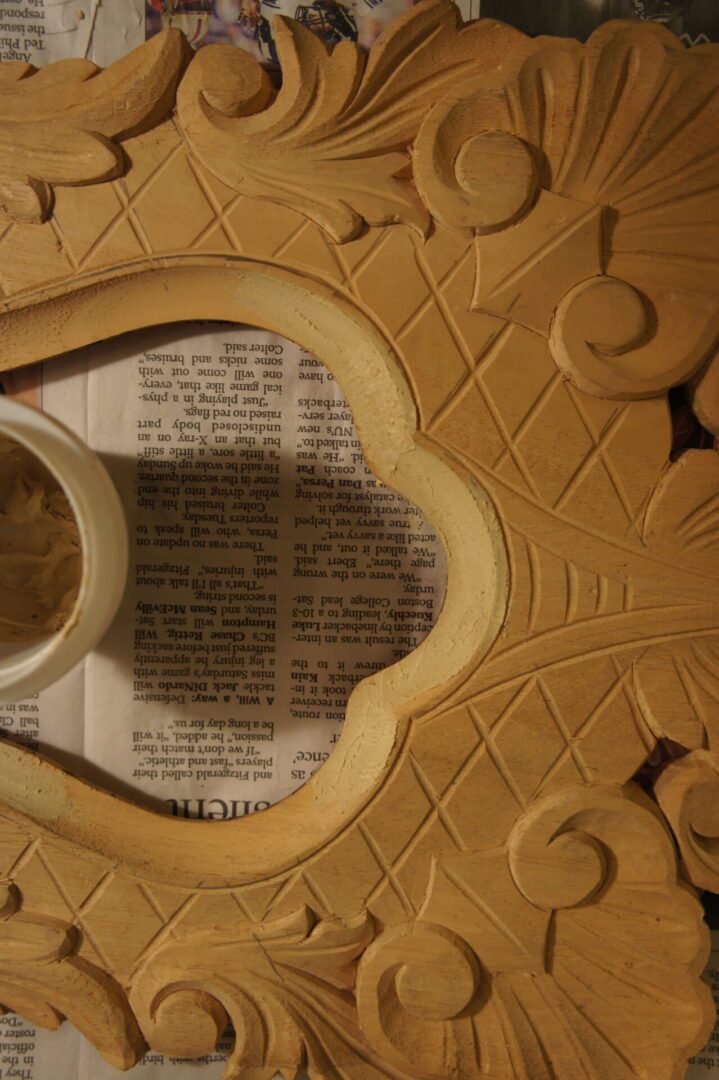
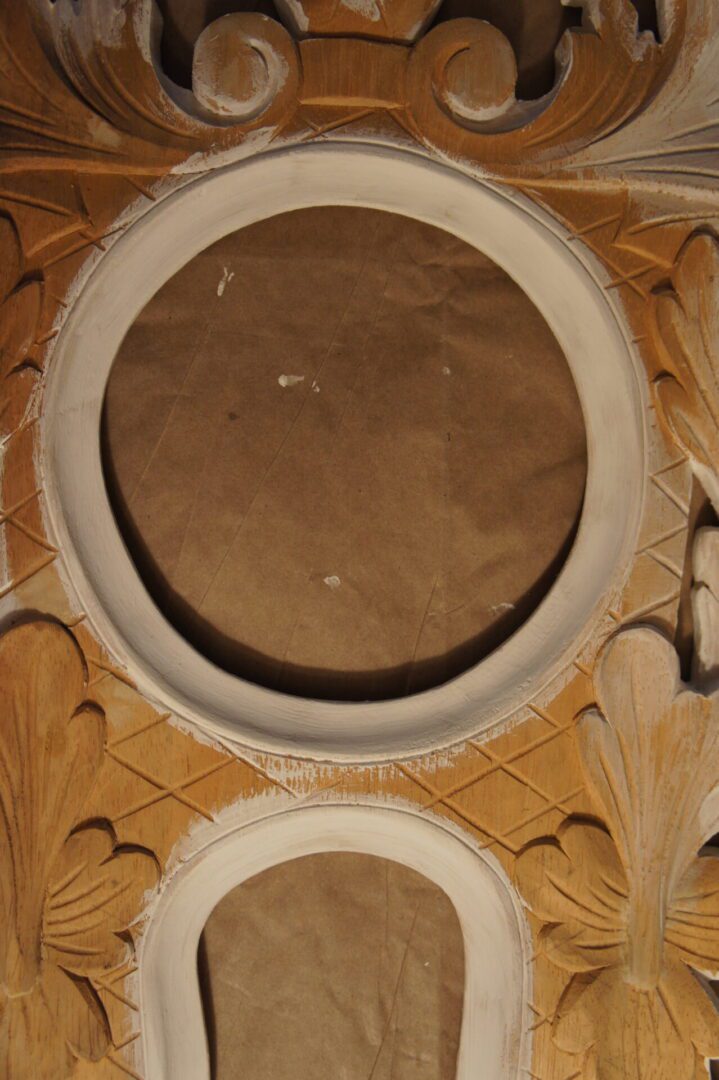
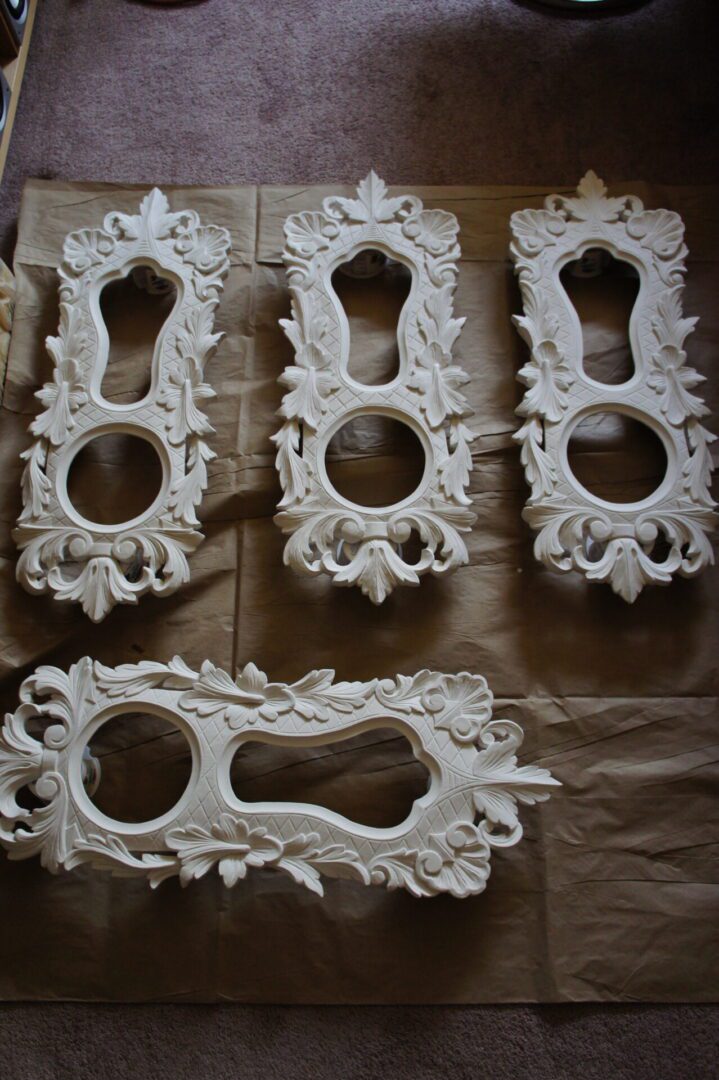
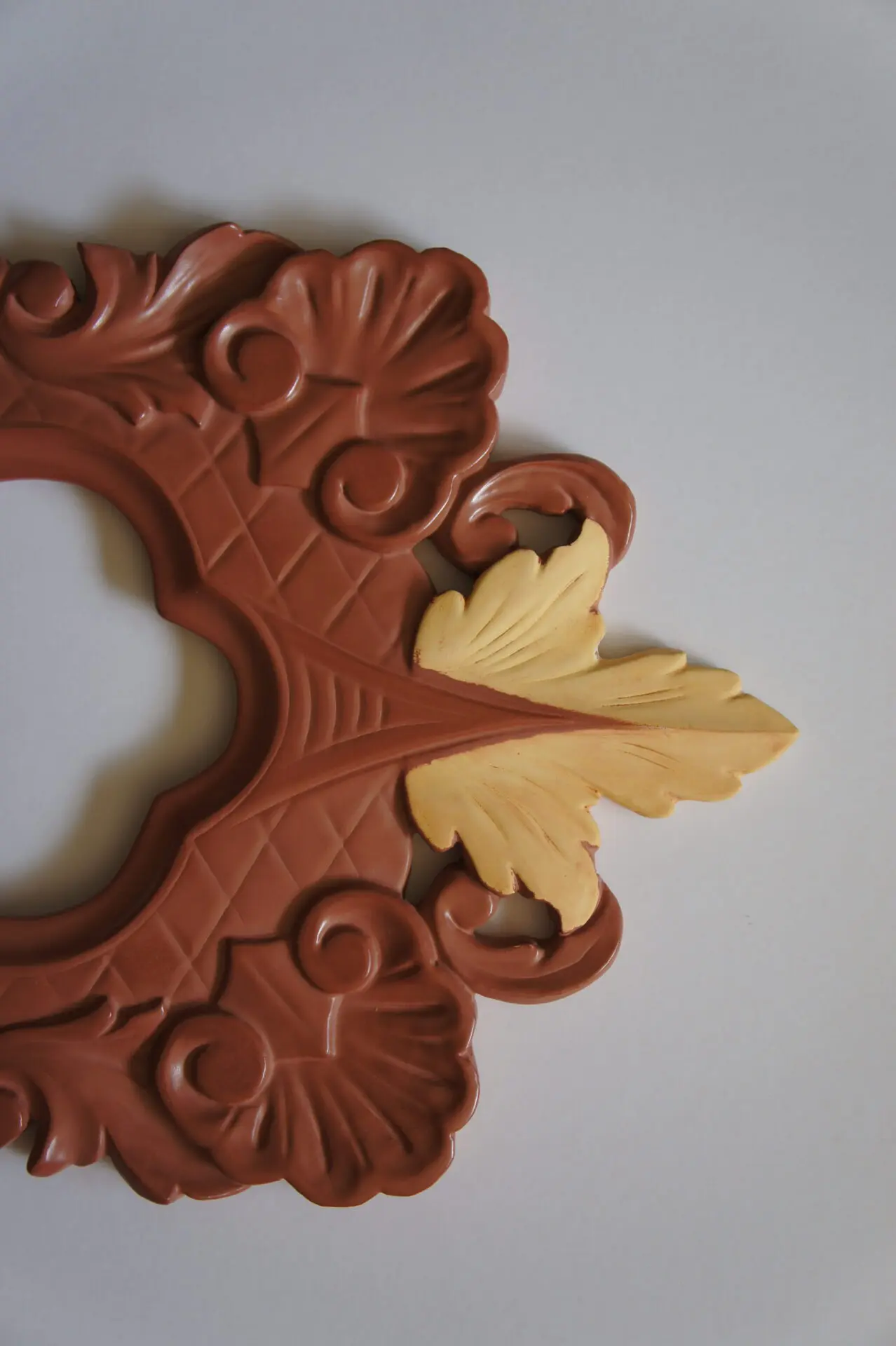
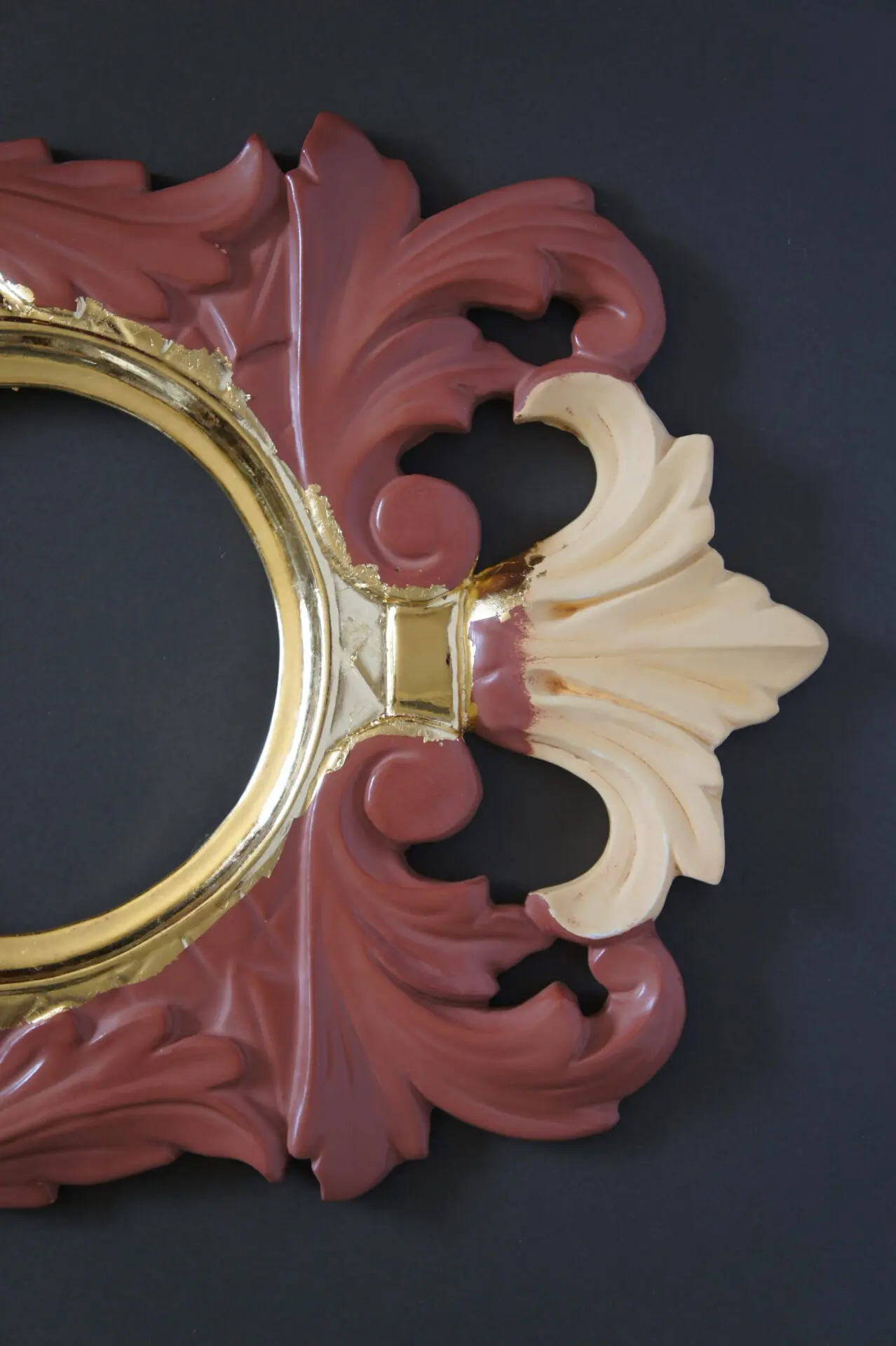
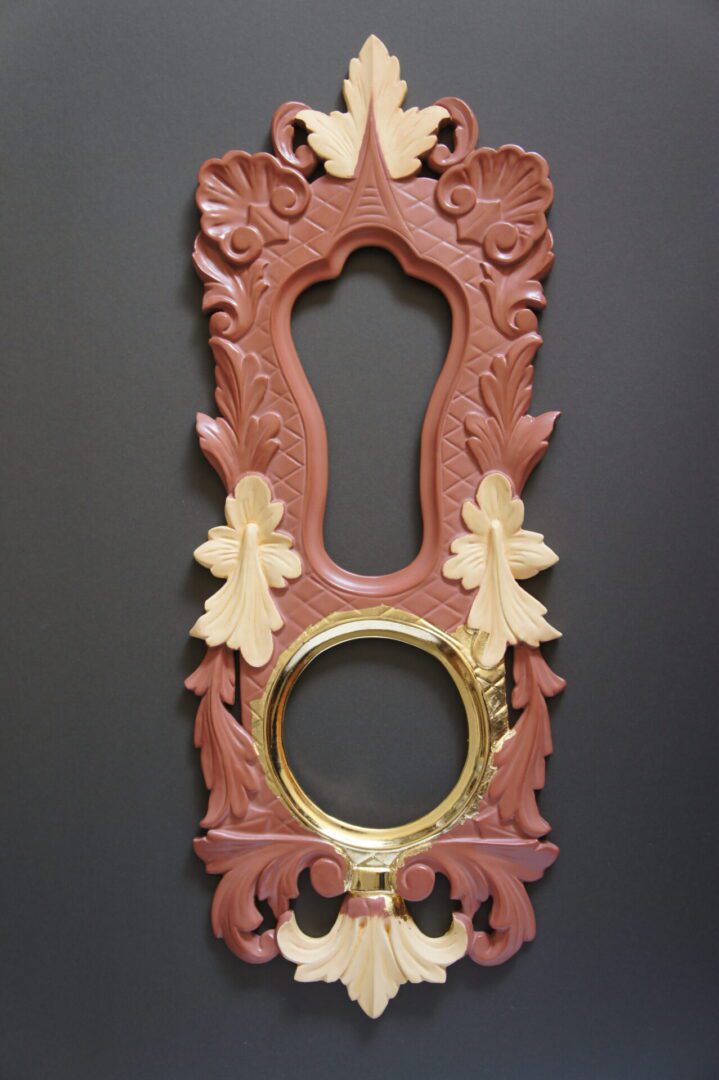
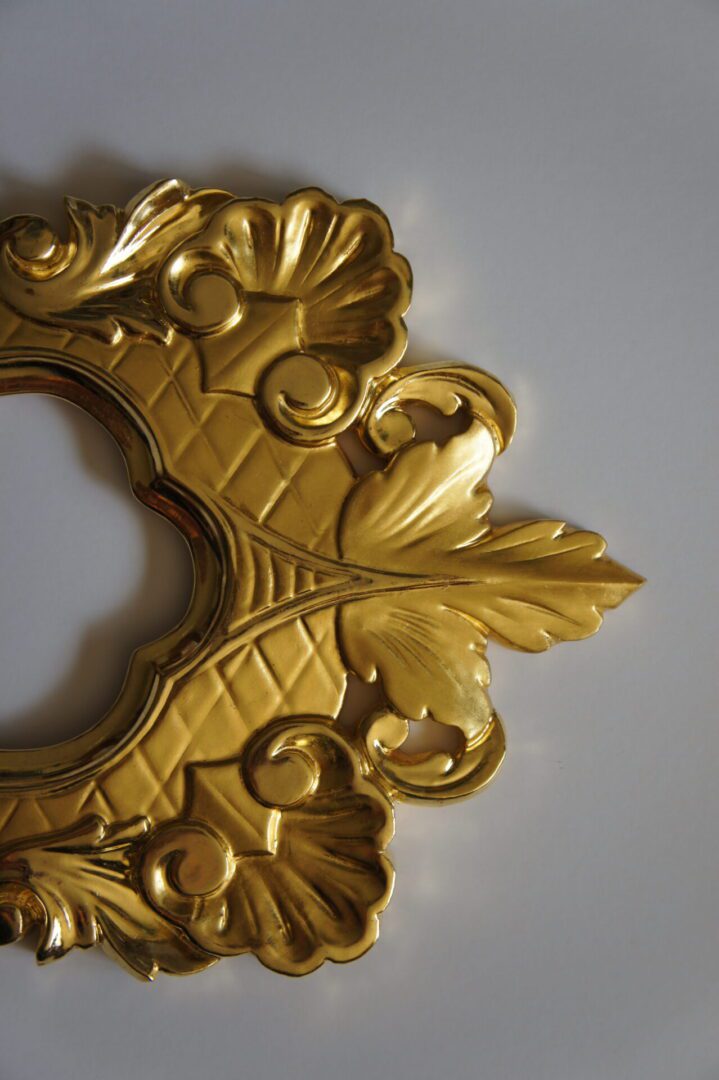
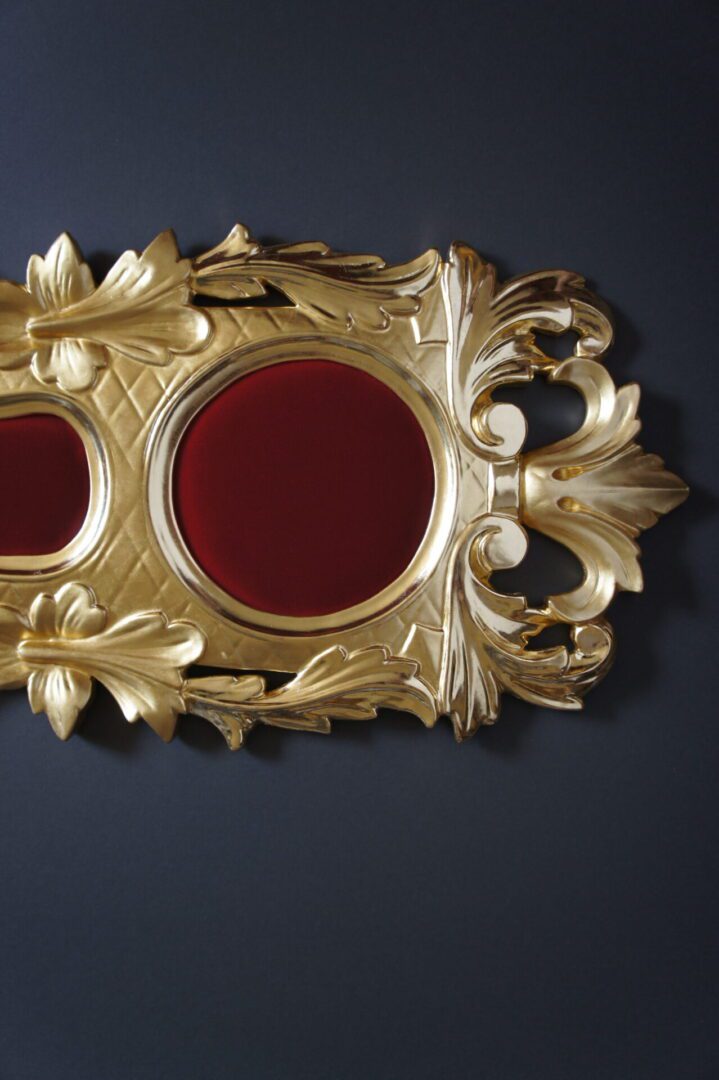
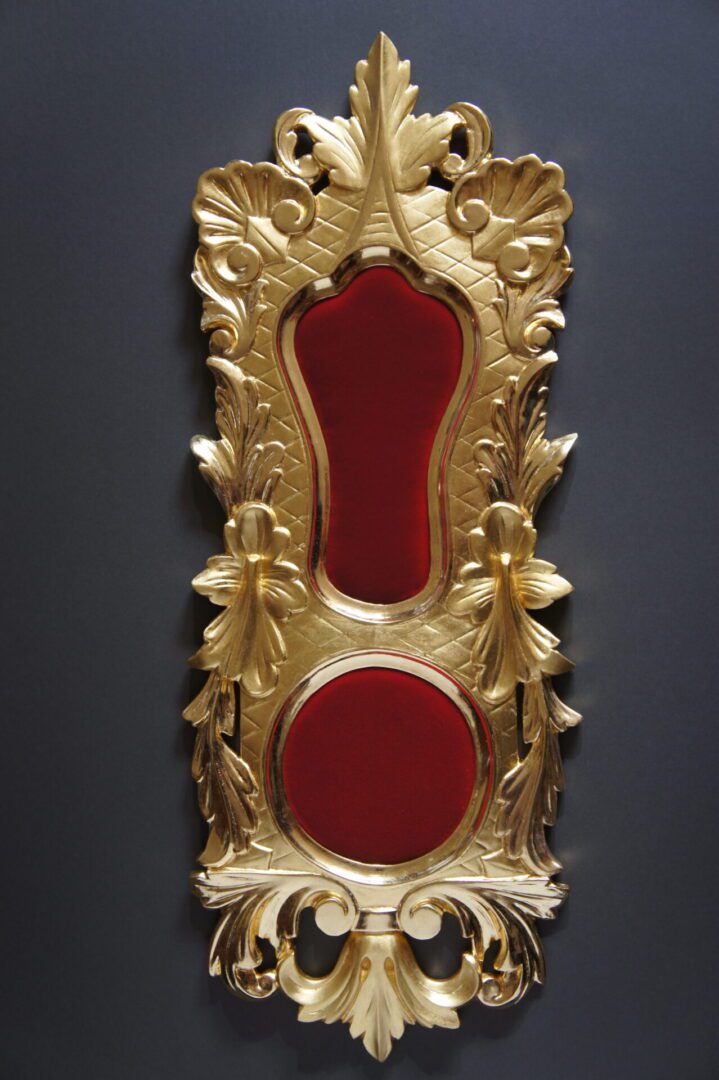
Gilding Architectural Elements in Chicago
1st Row: During conservation.
2nd Row: After conservation.
